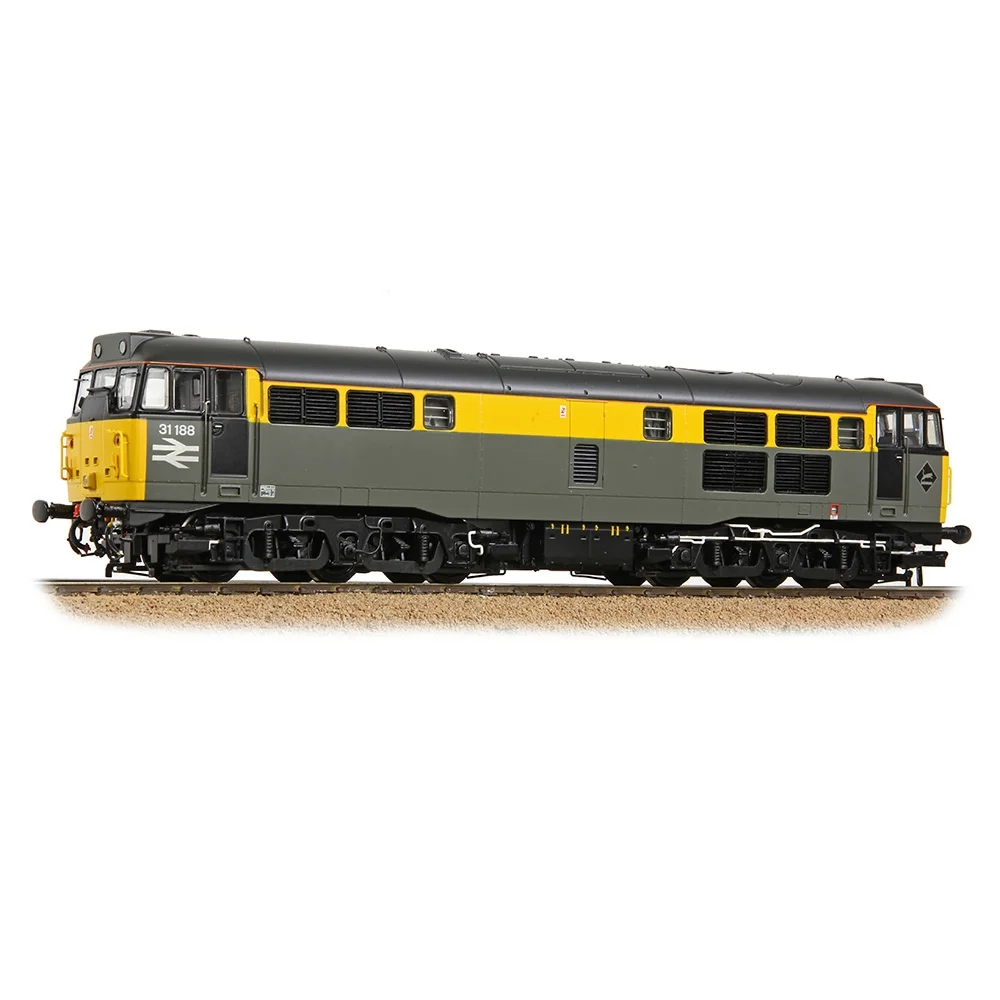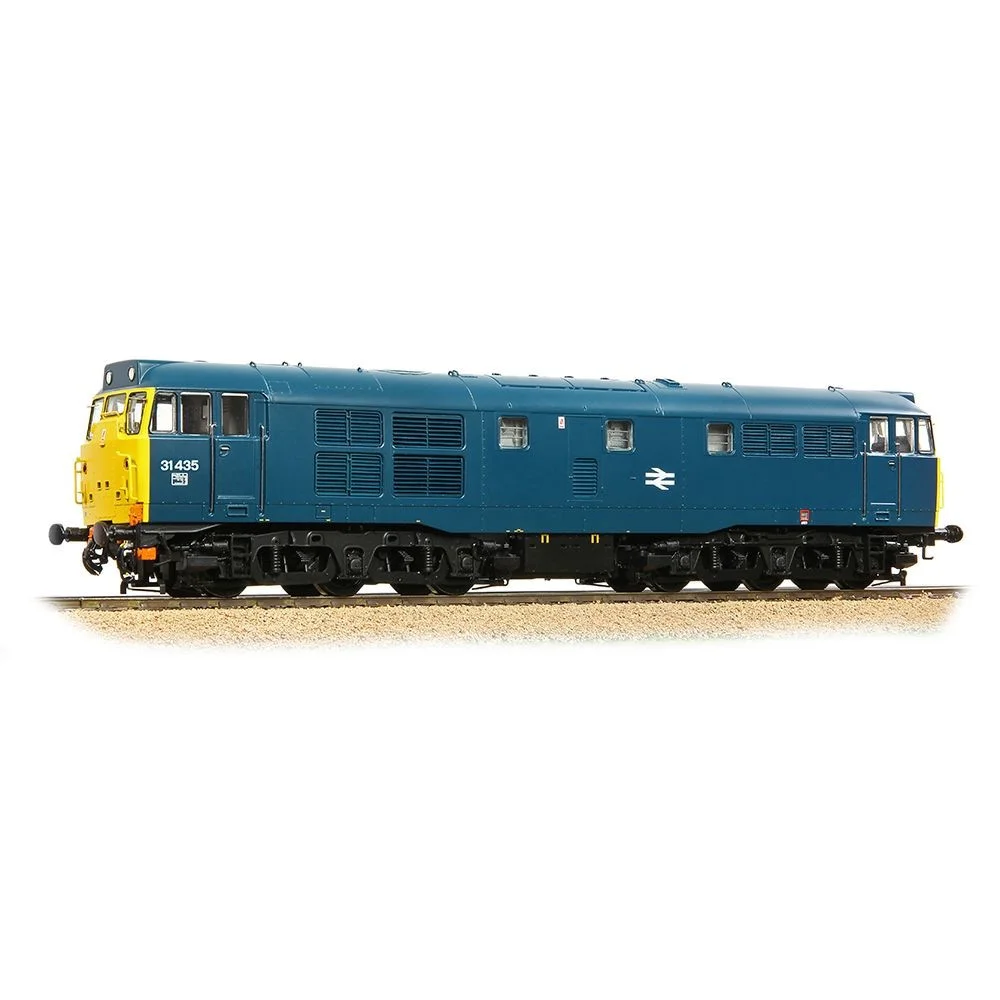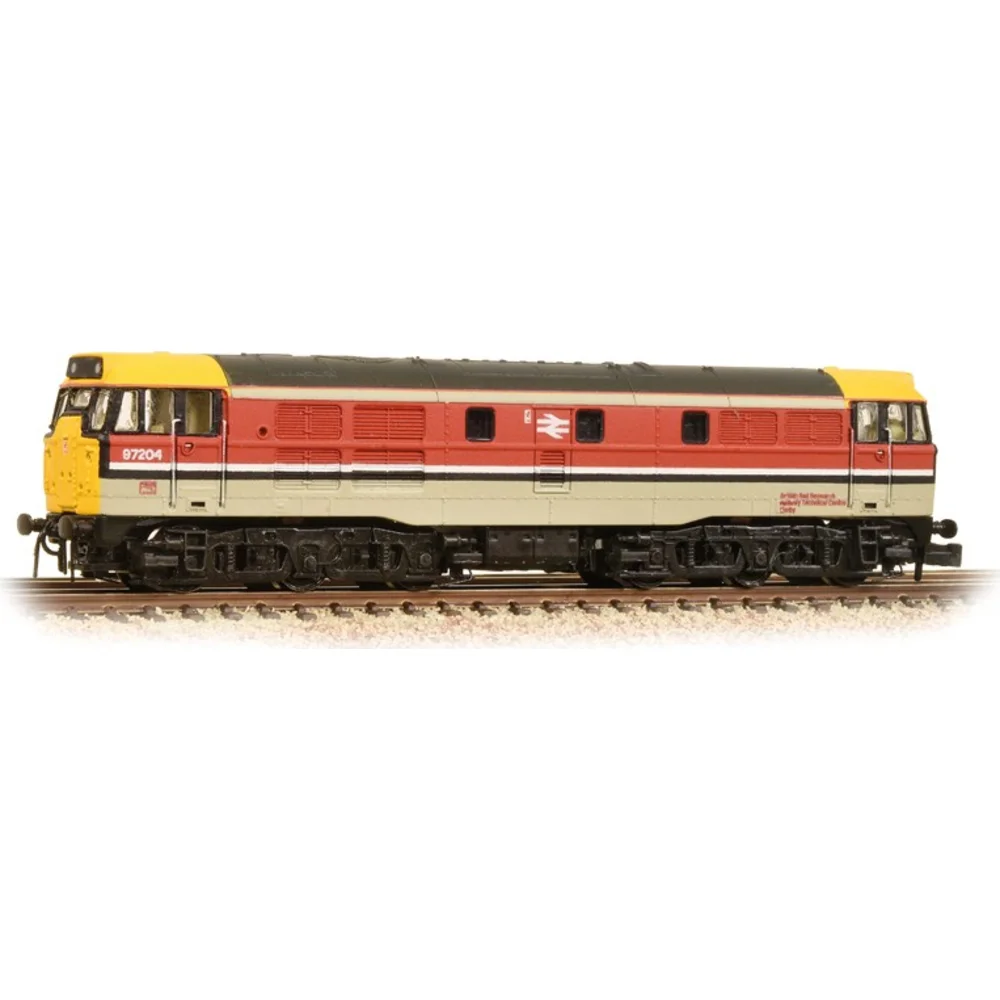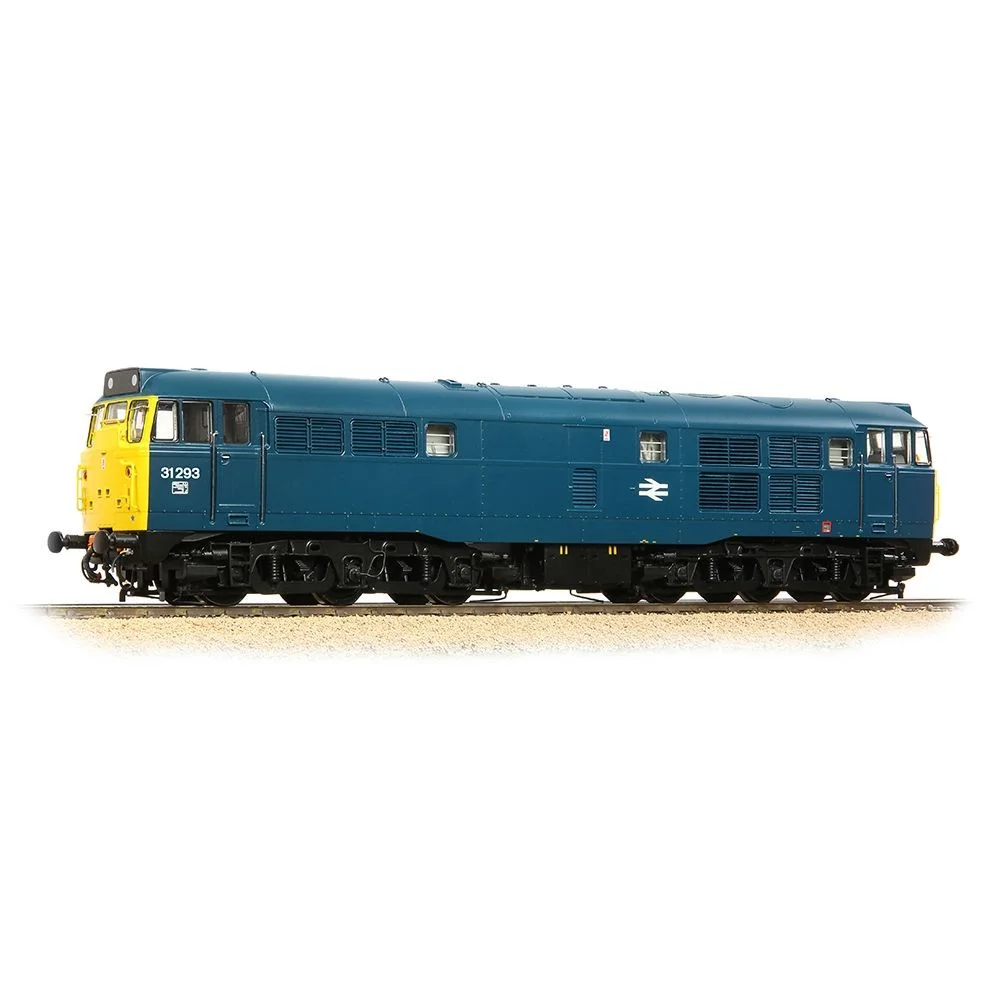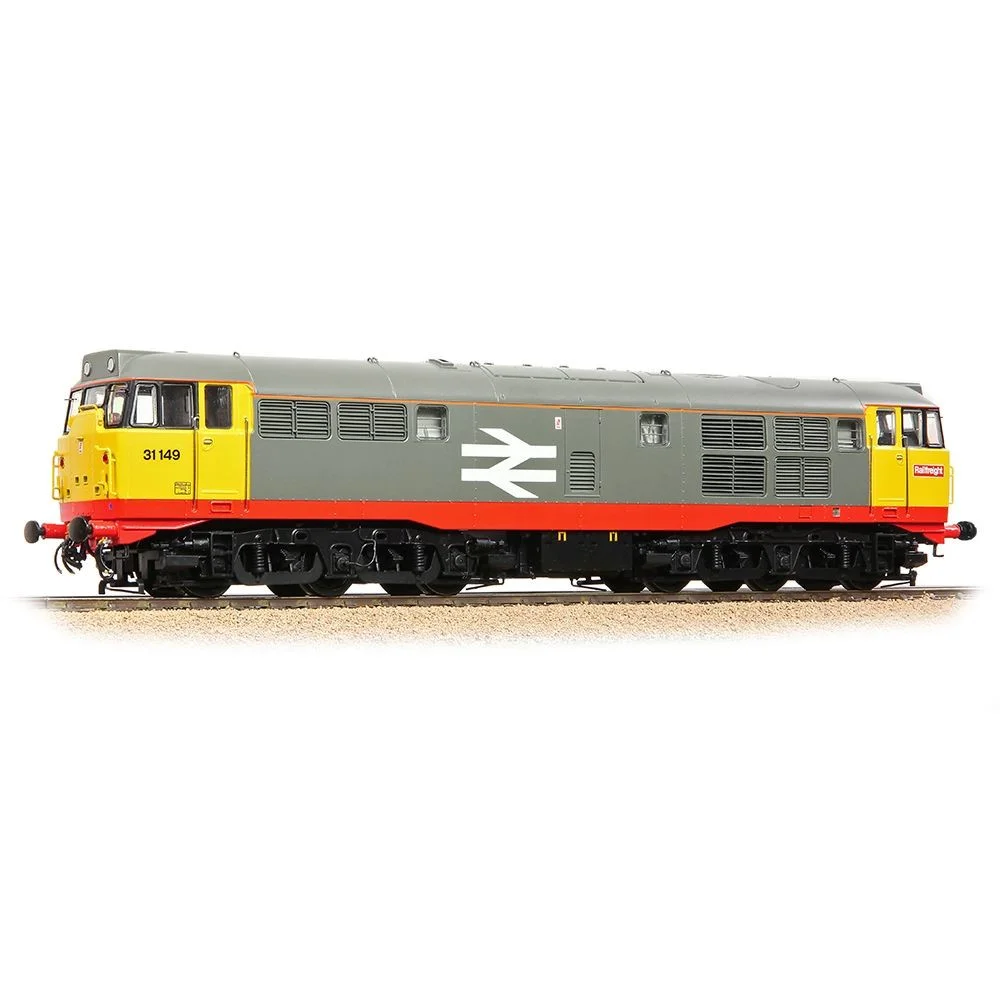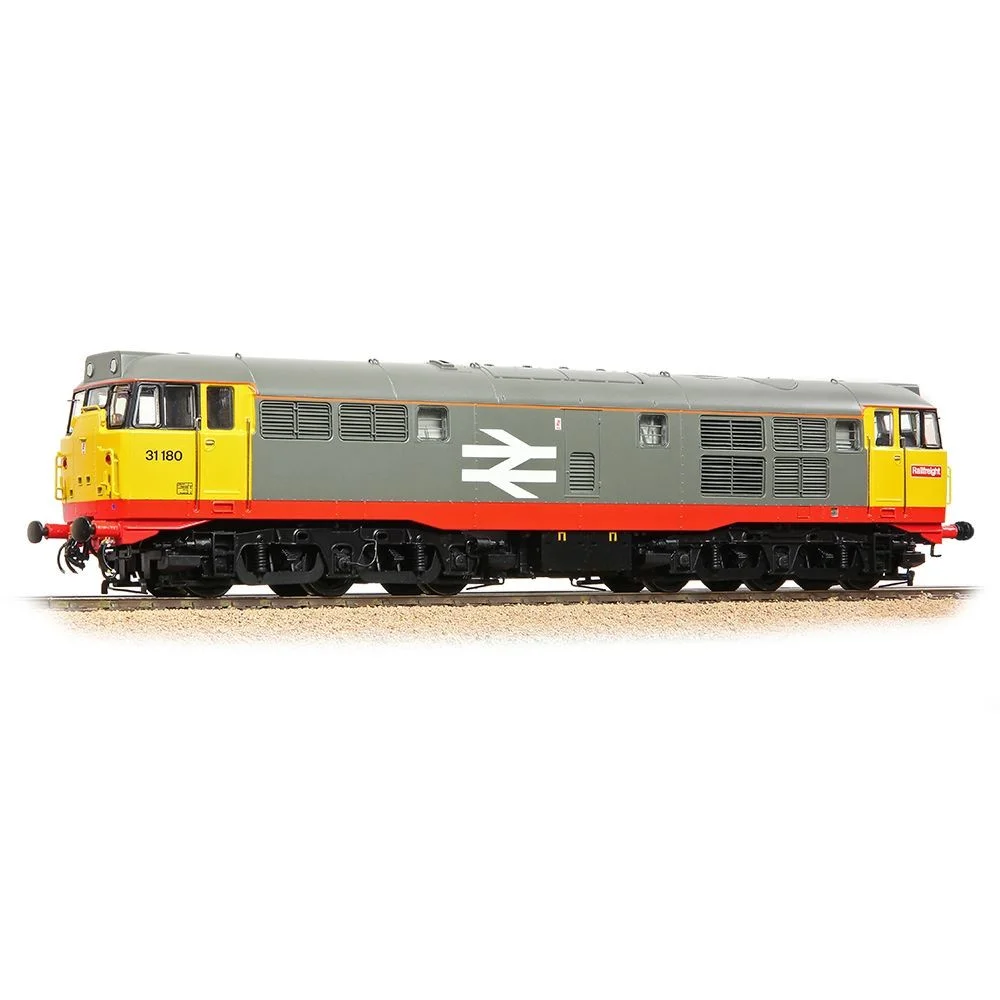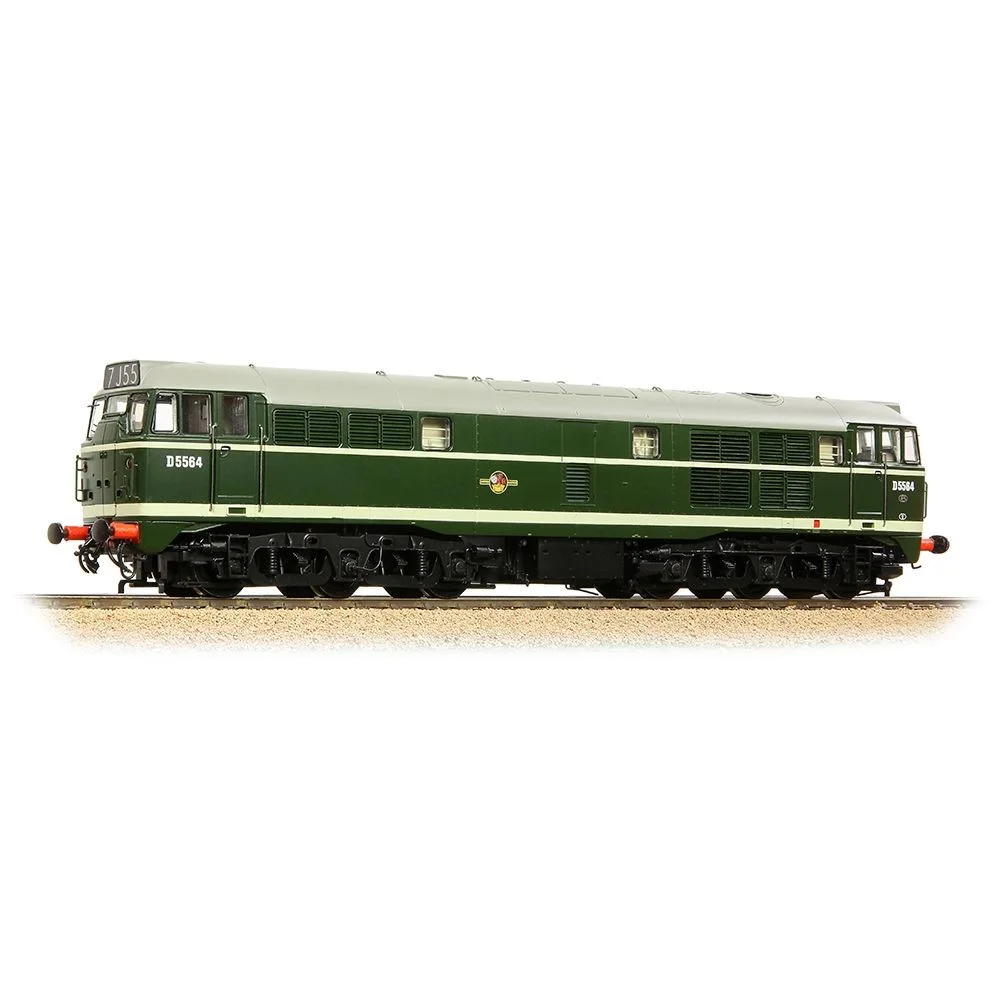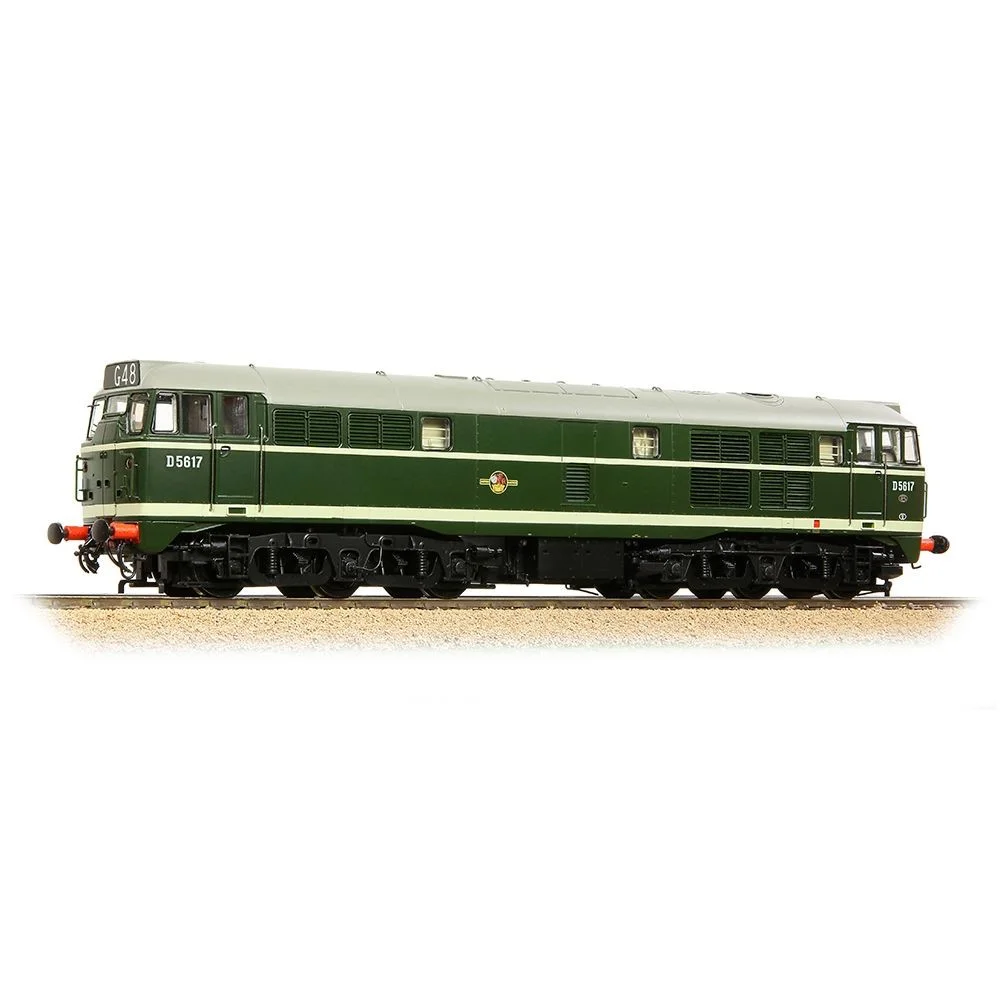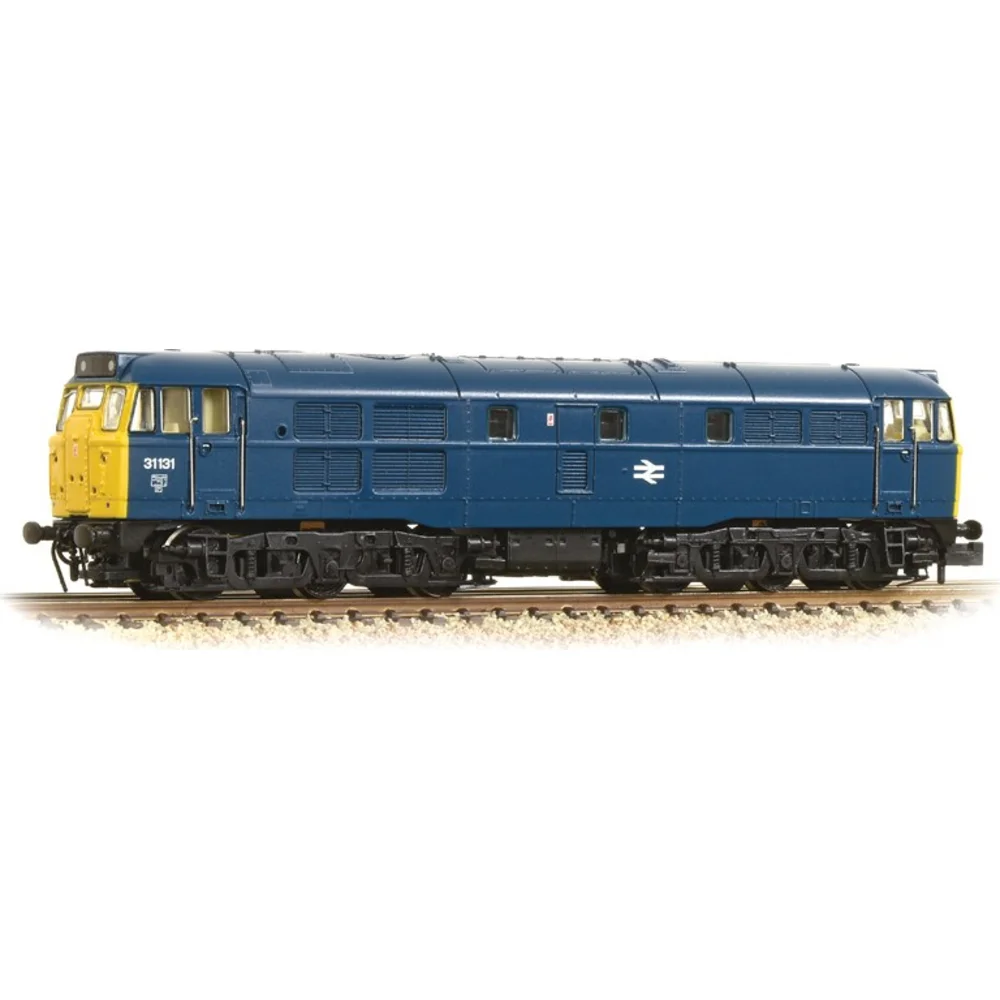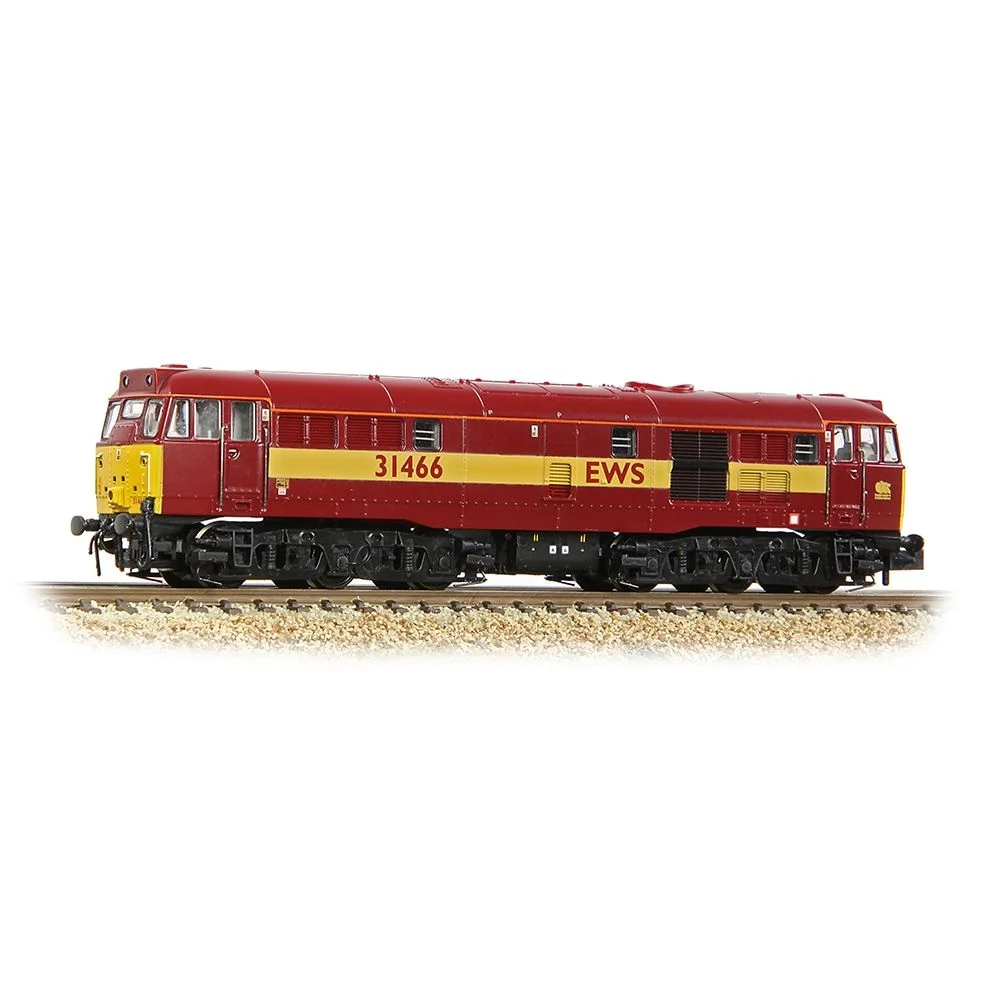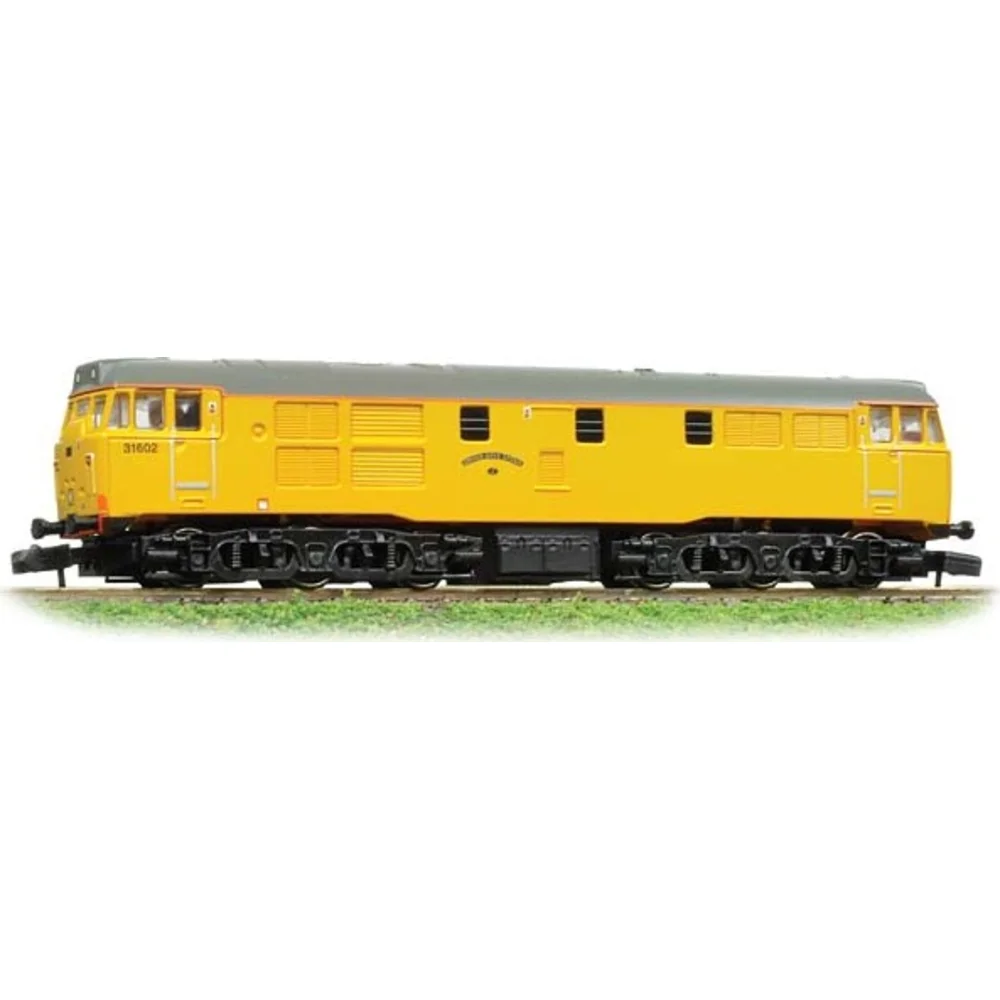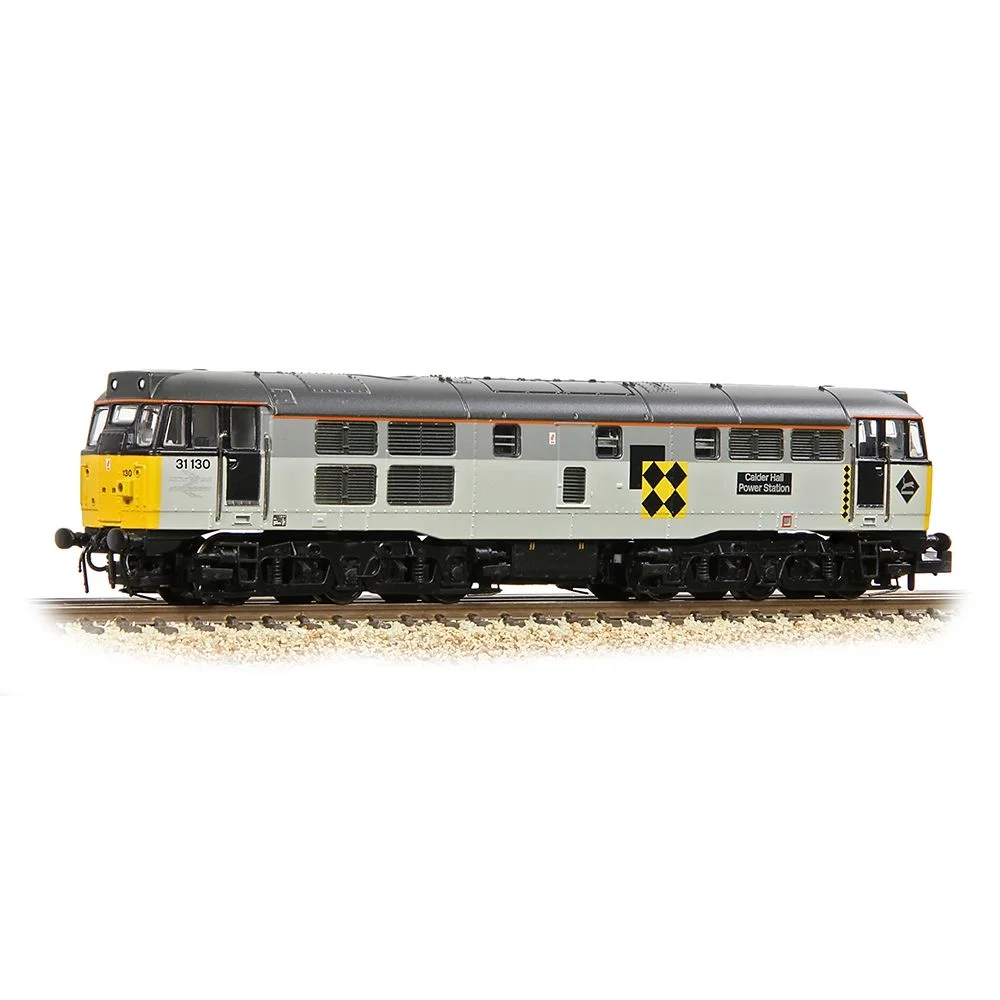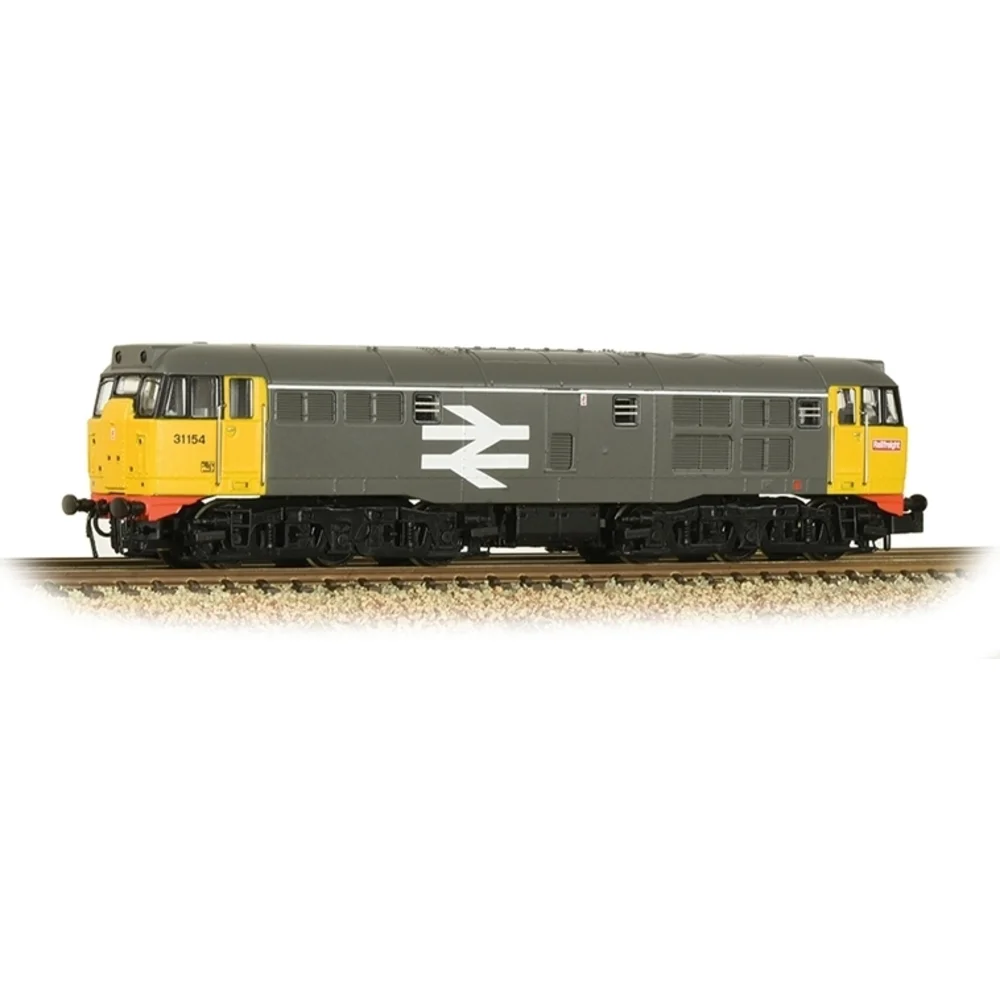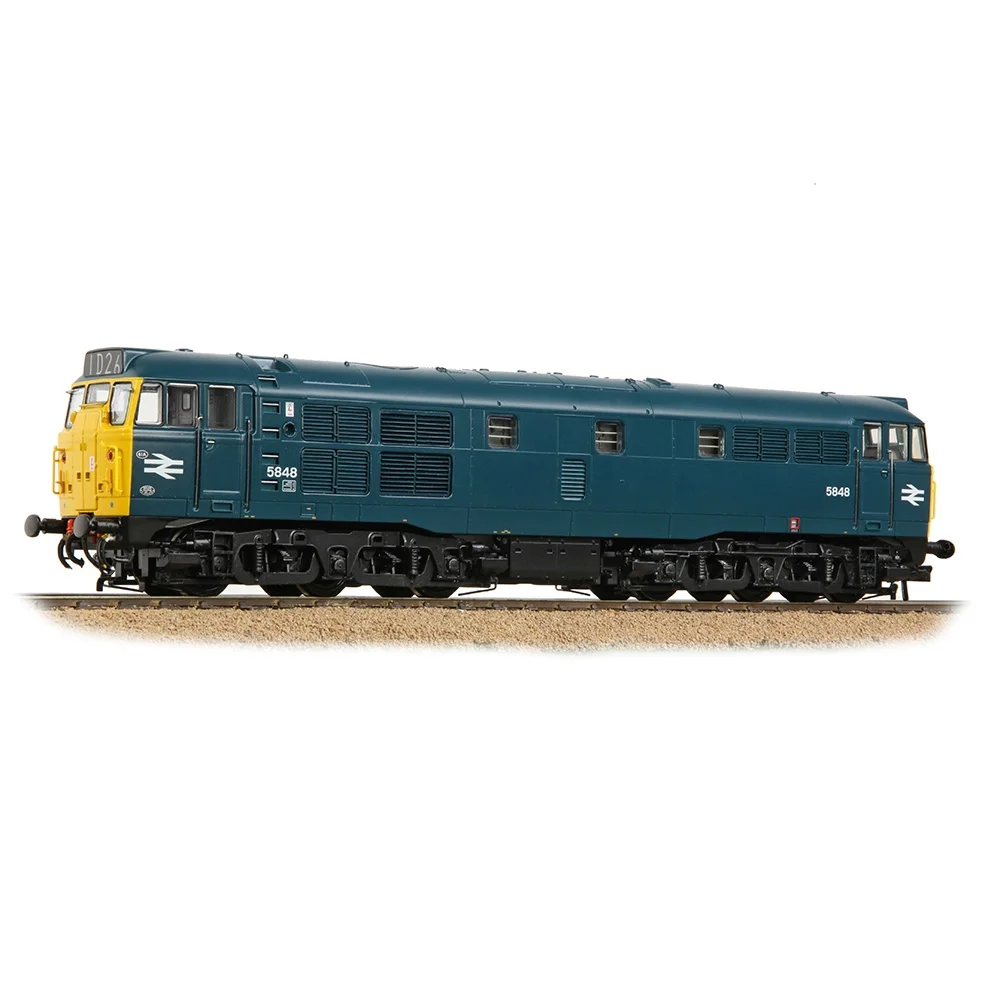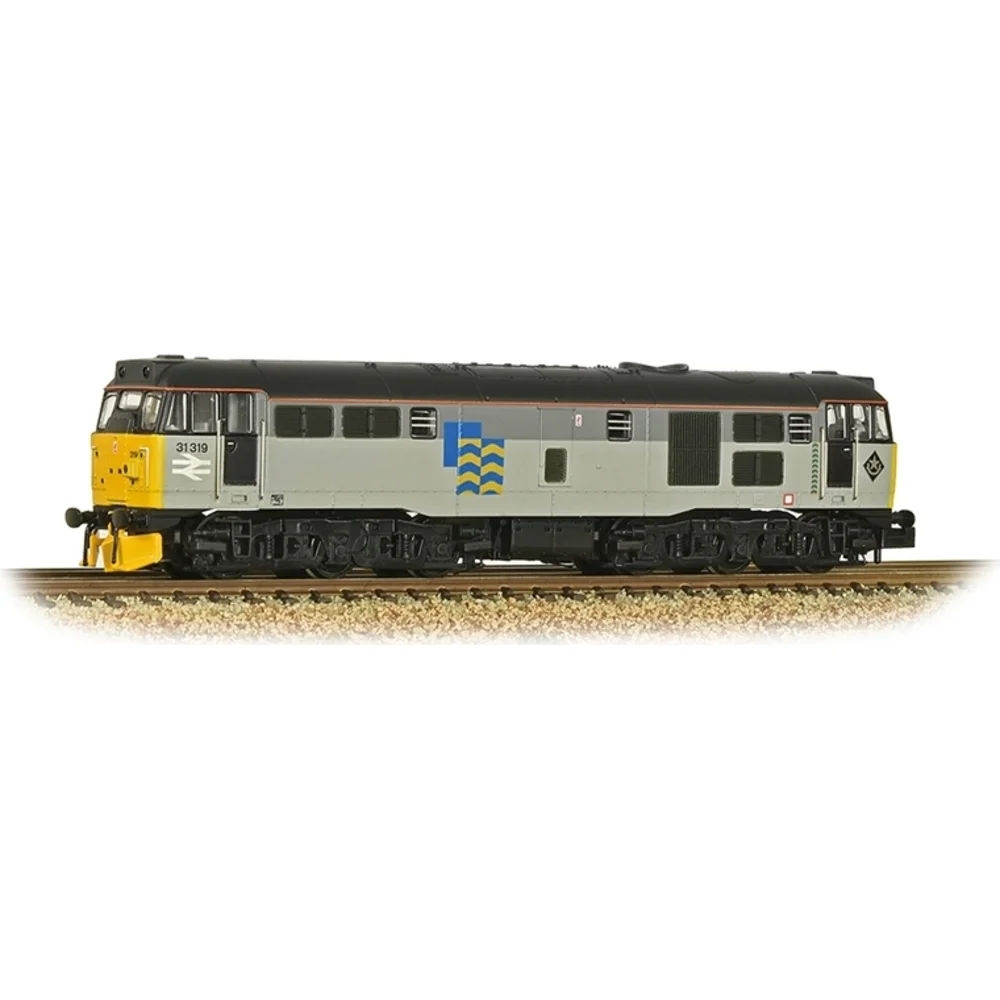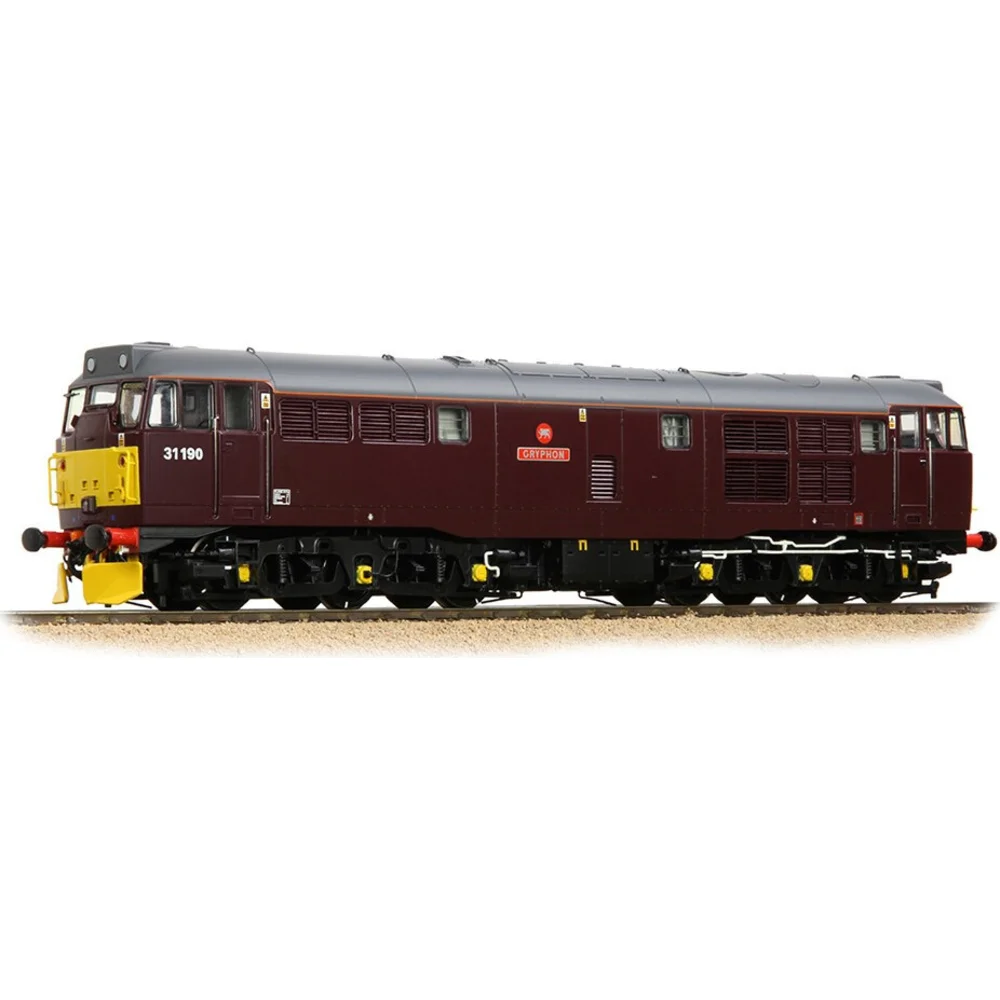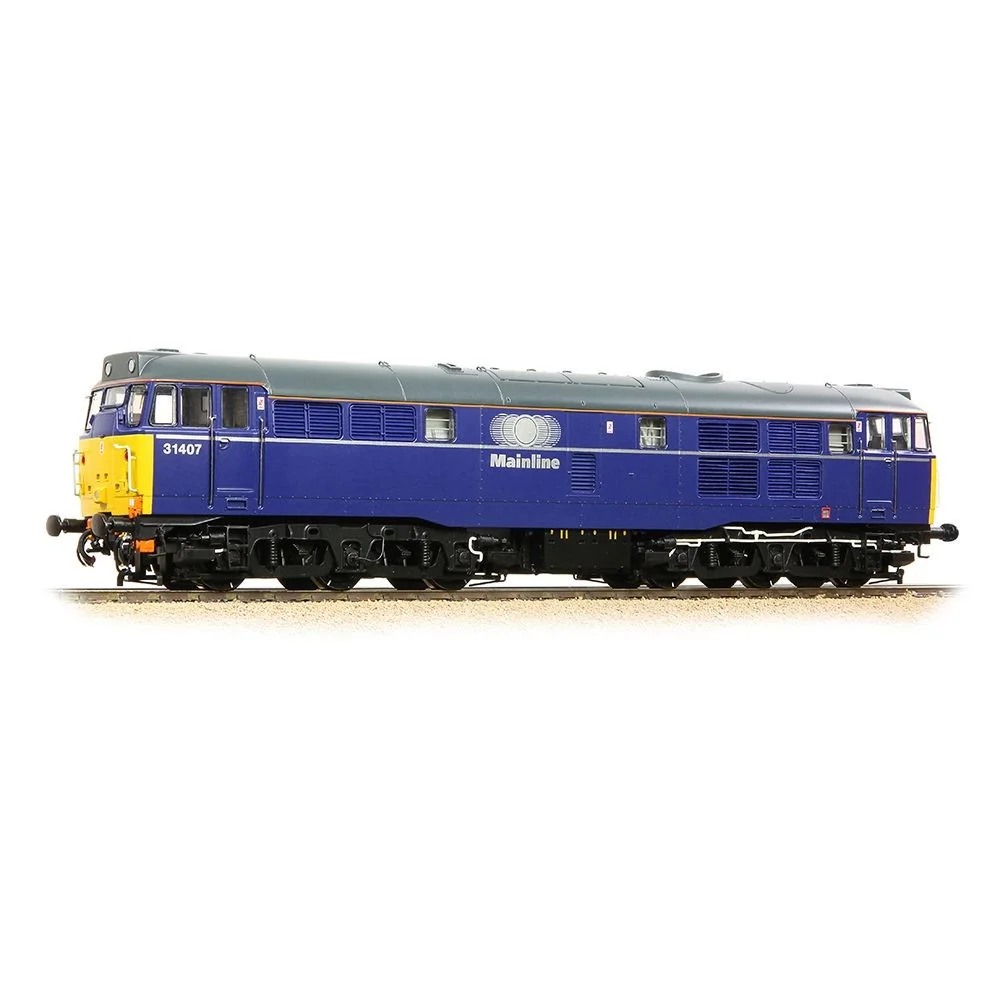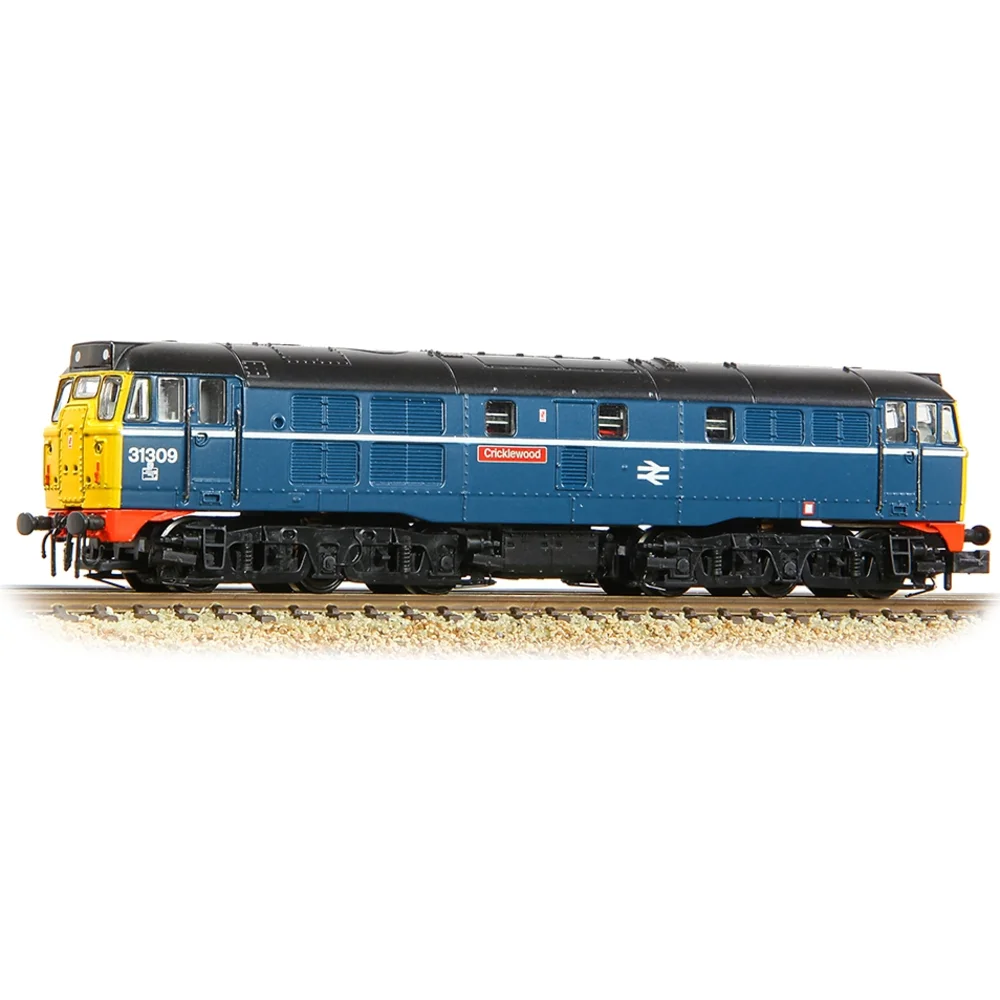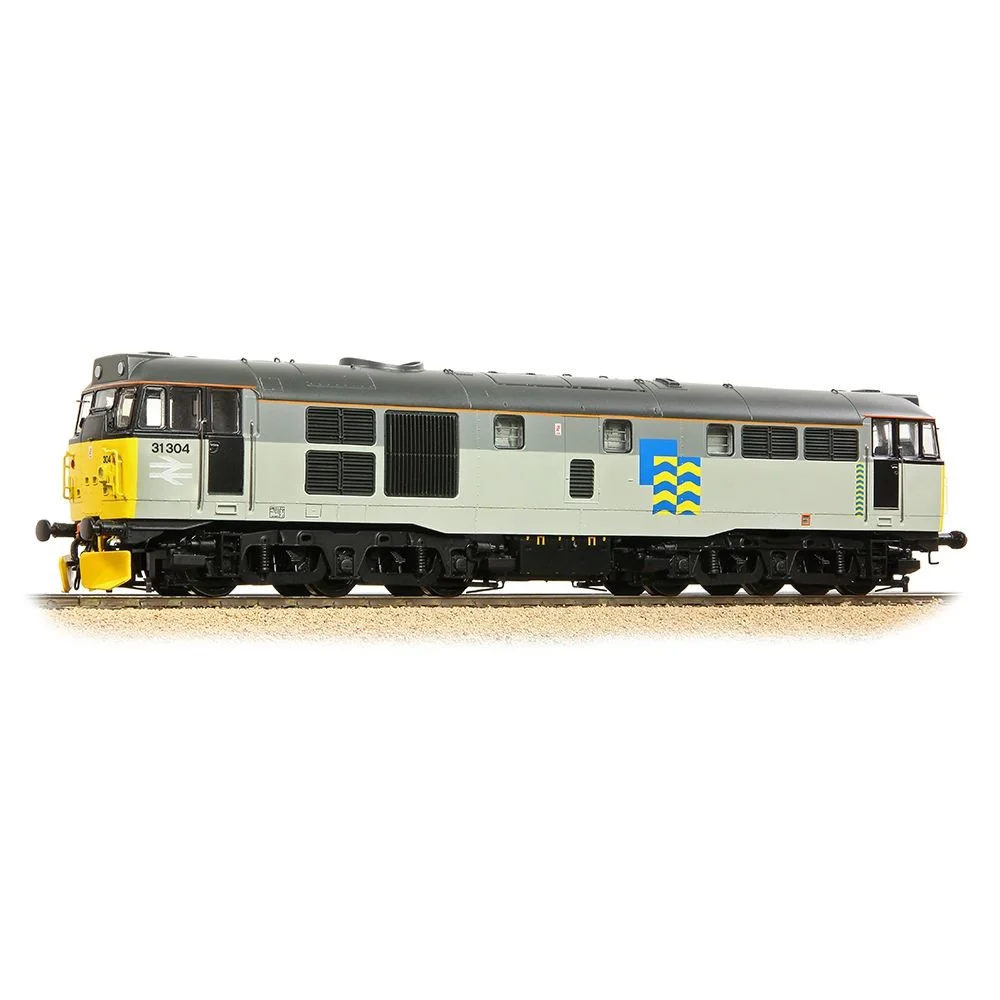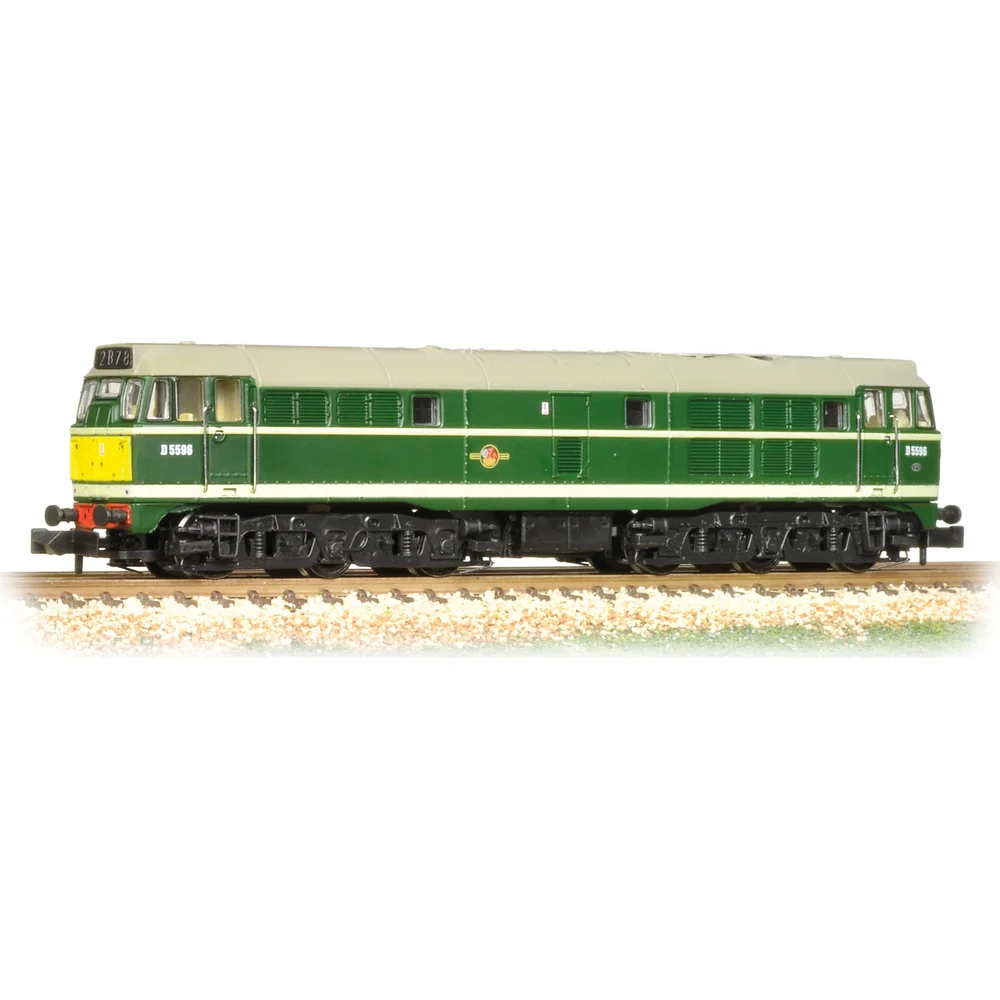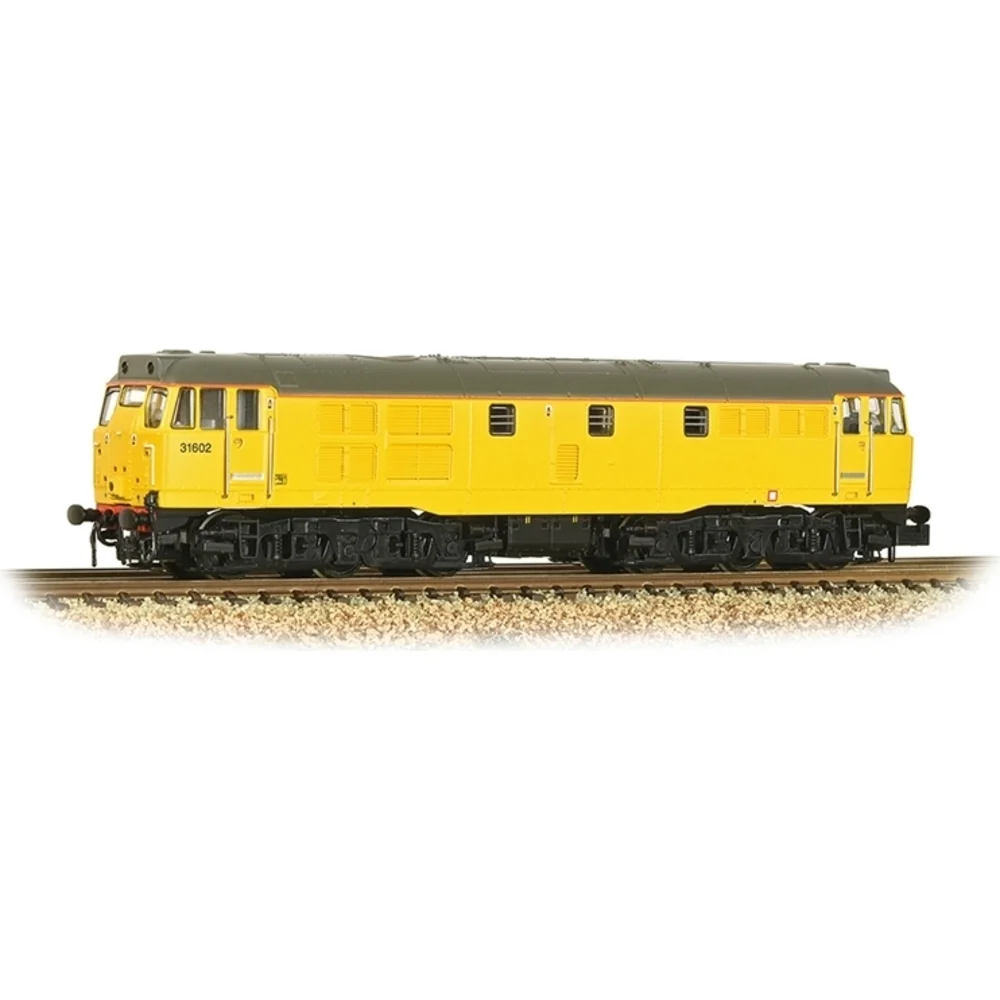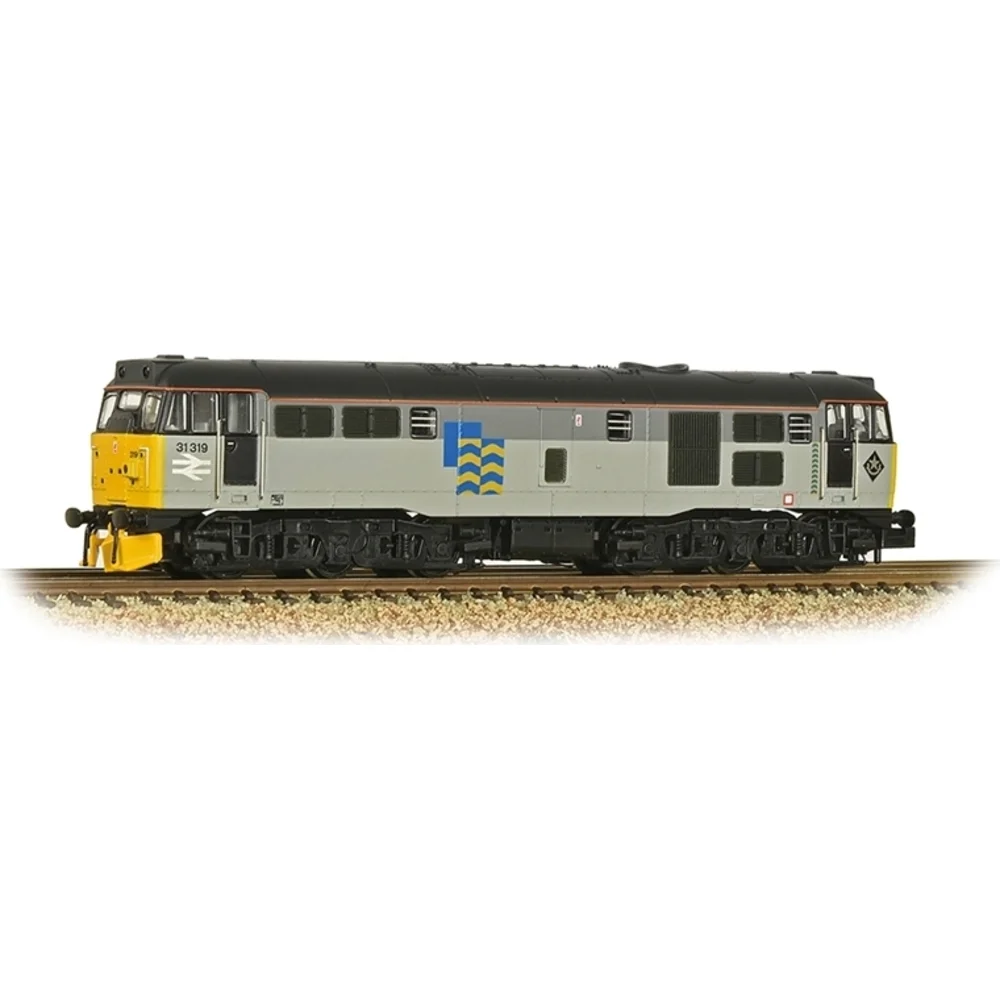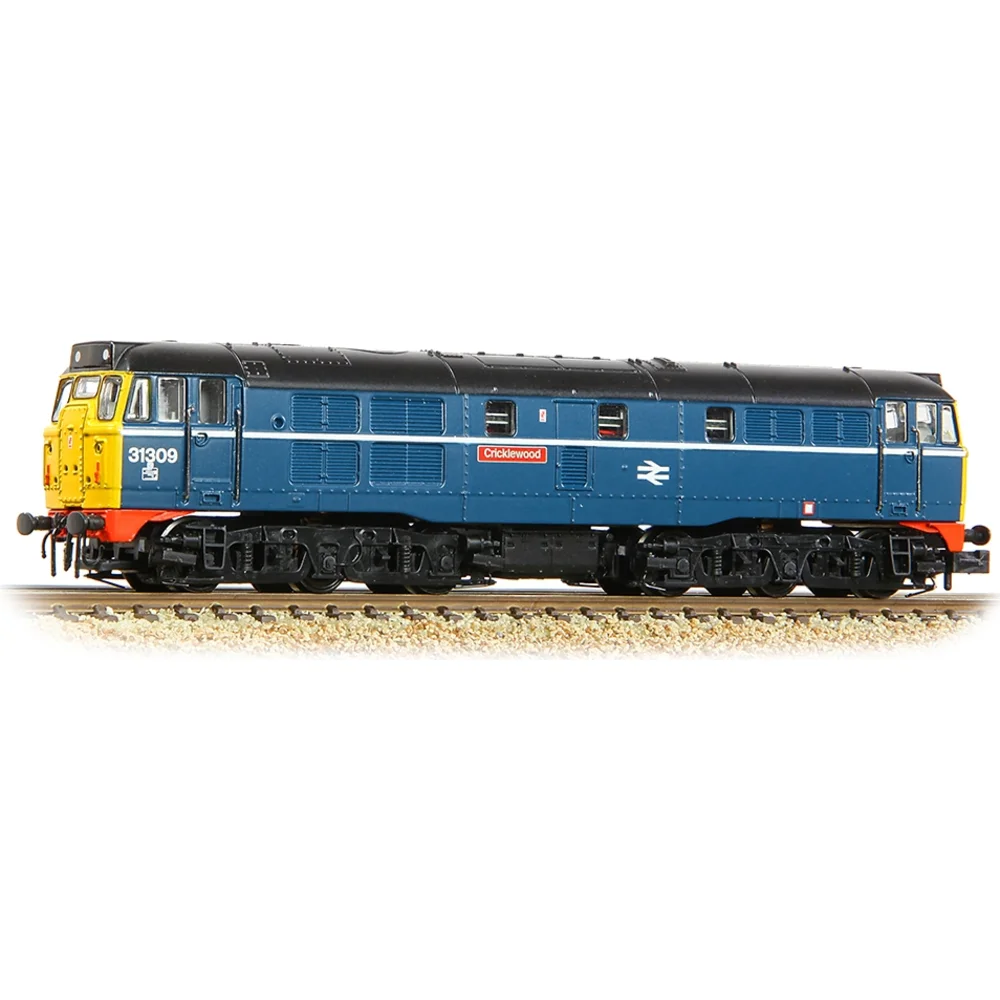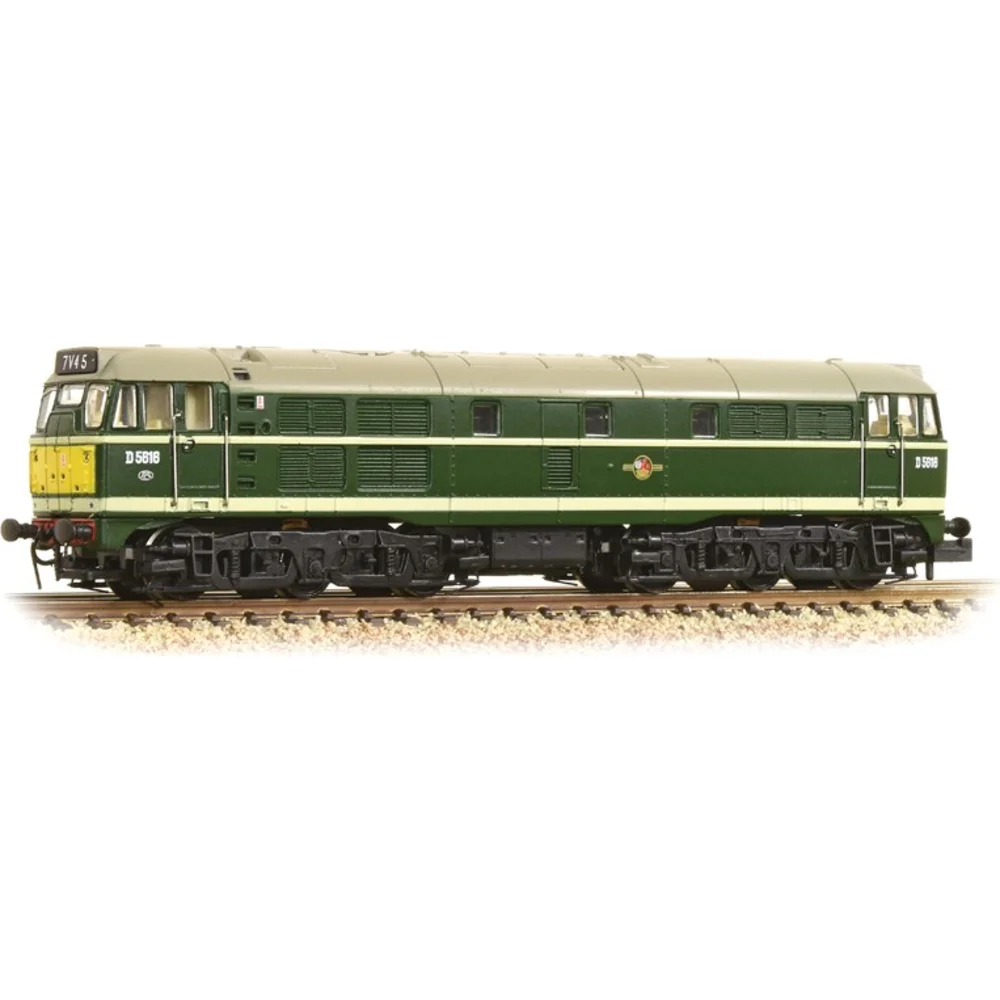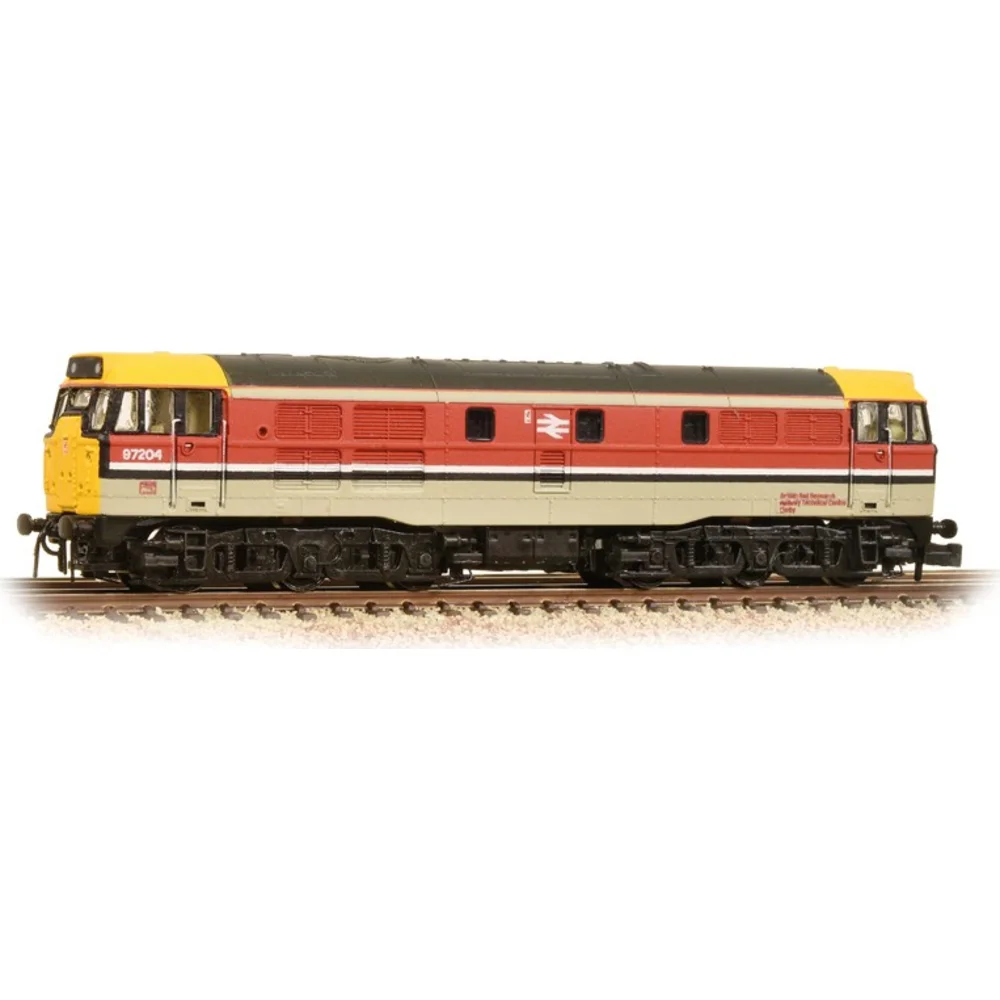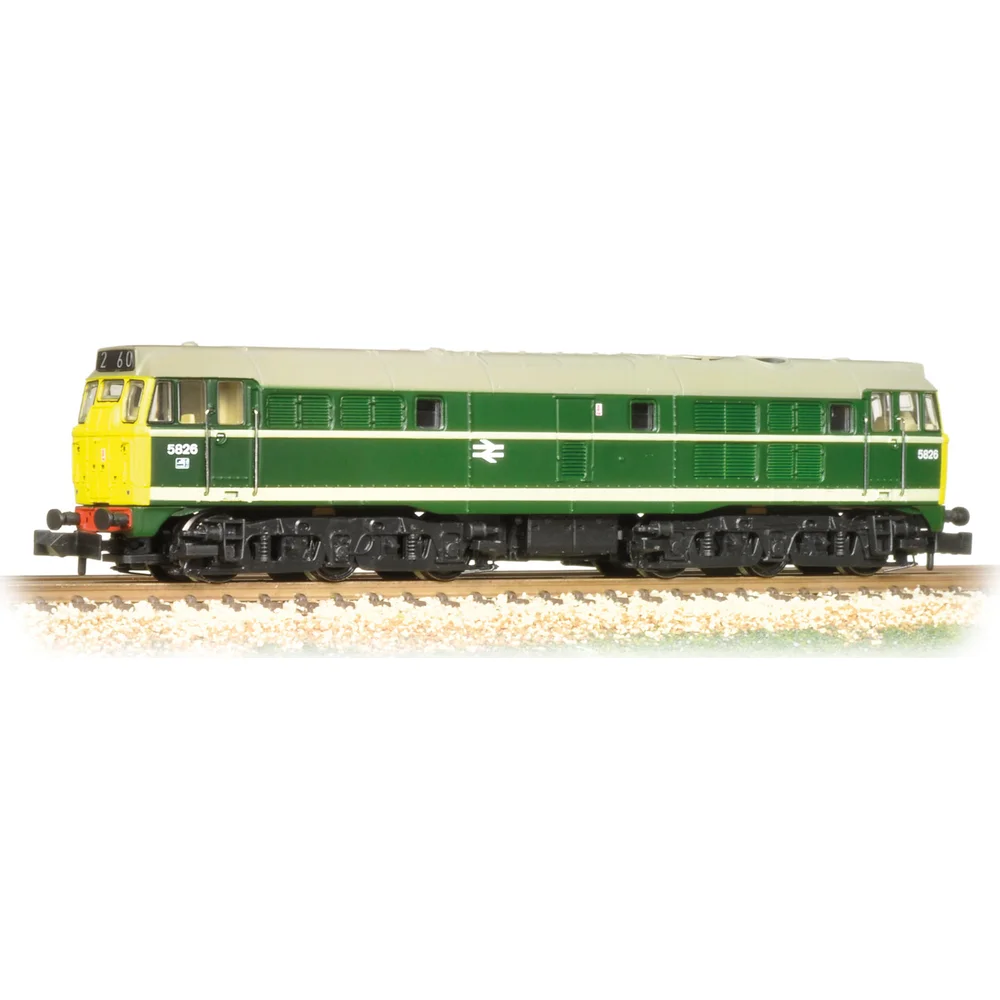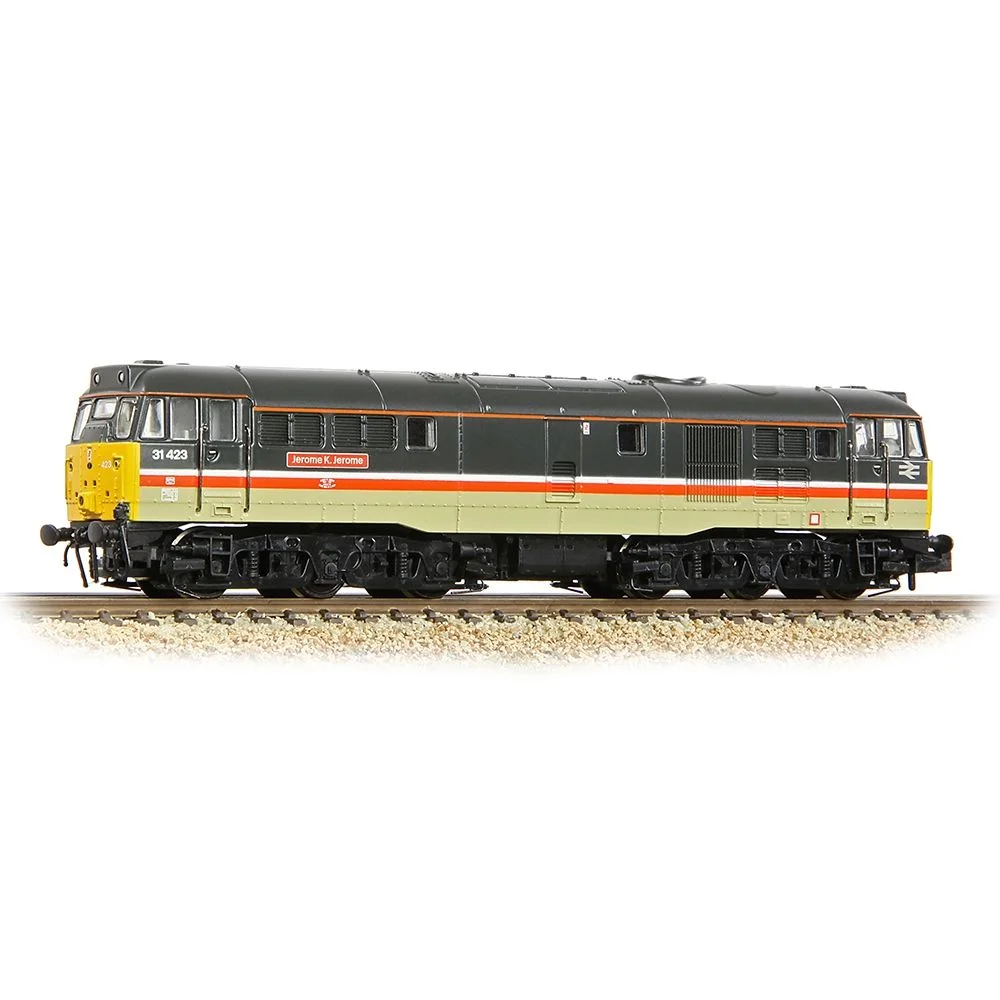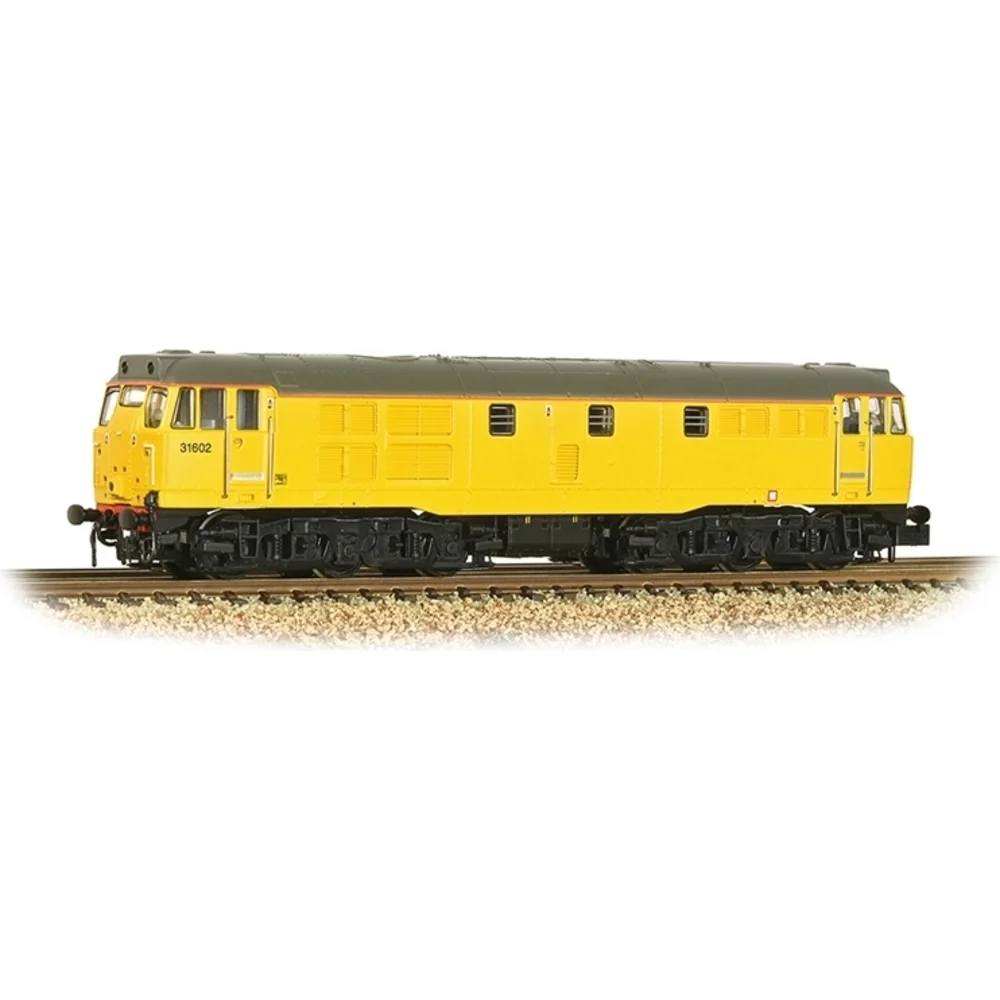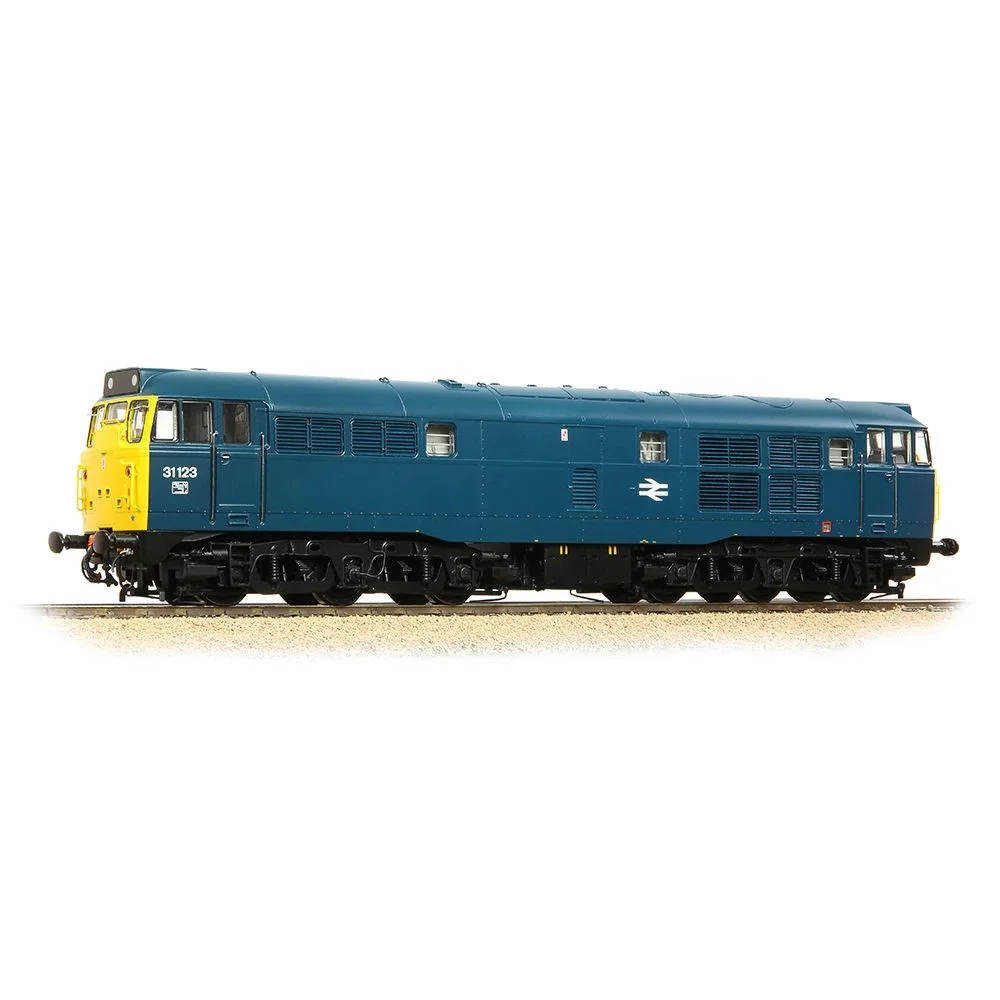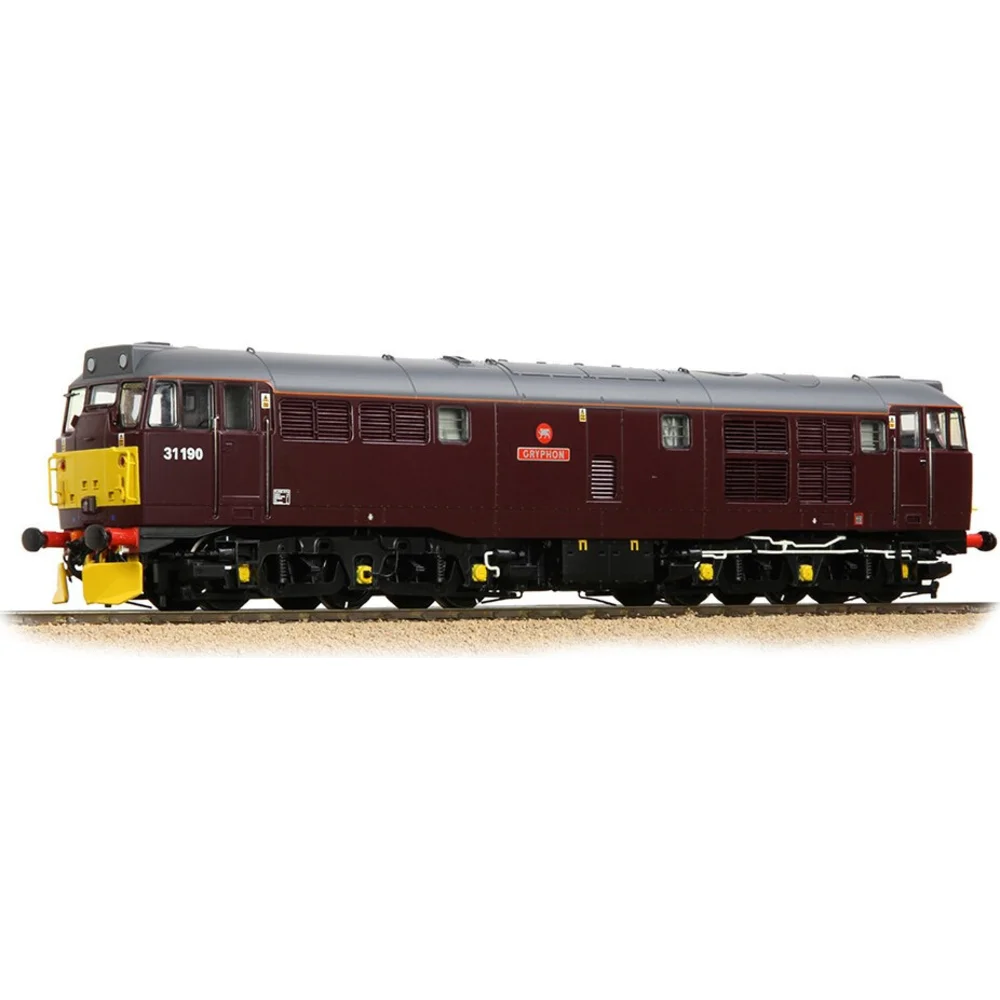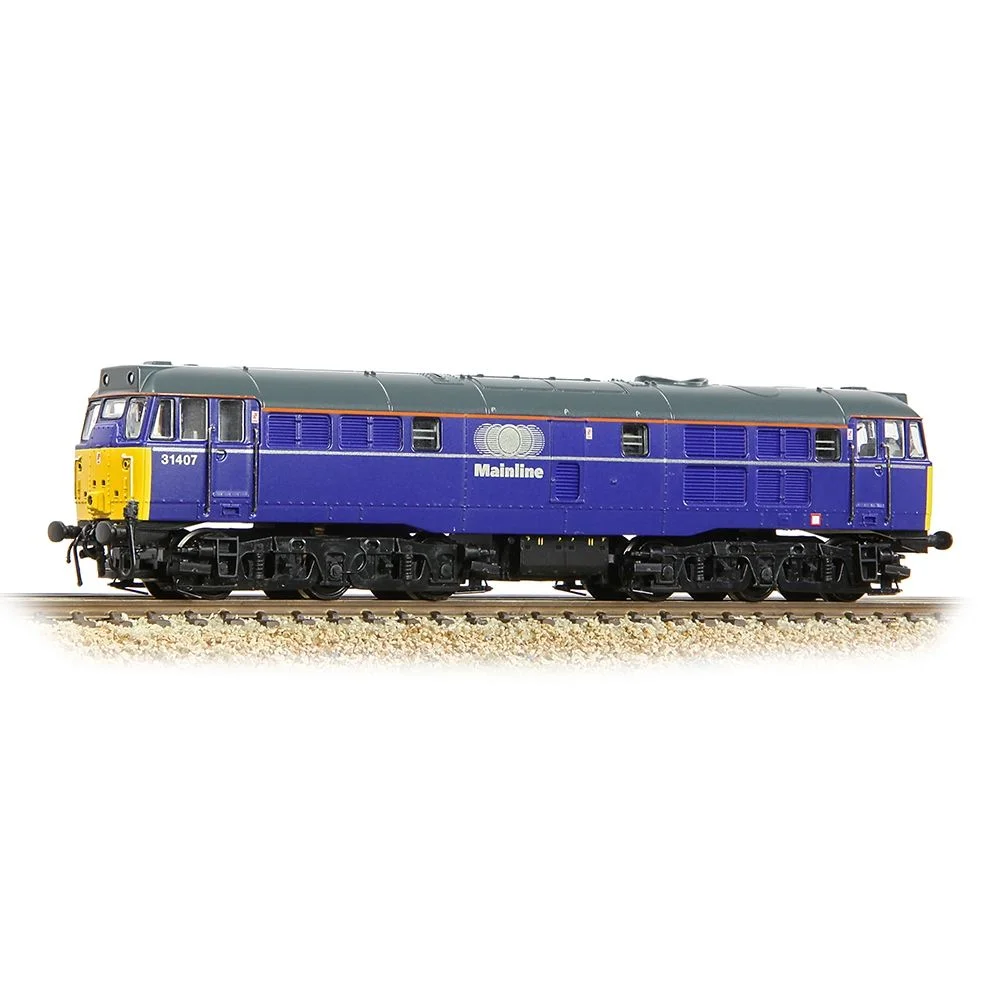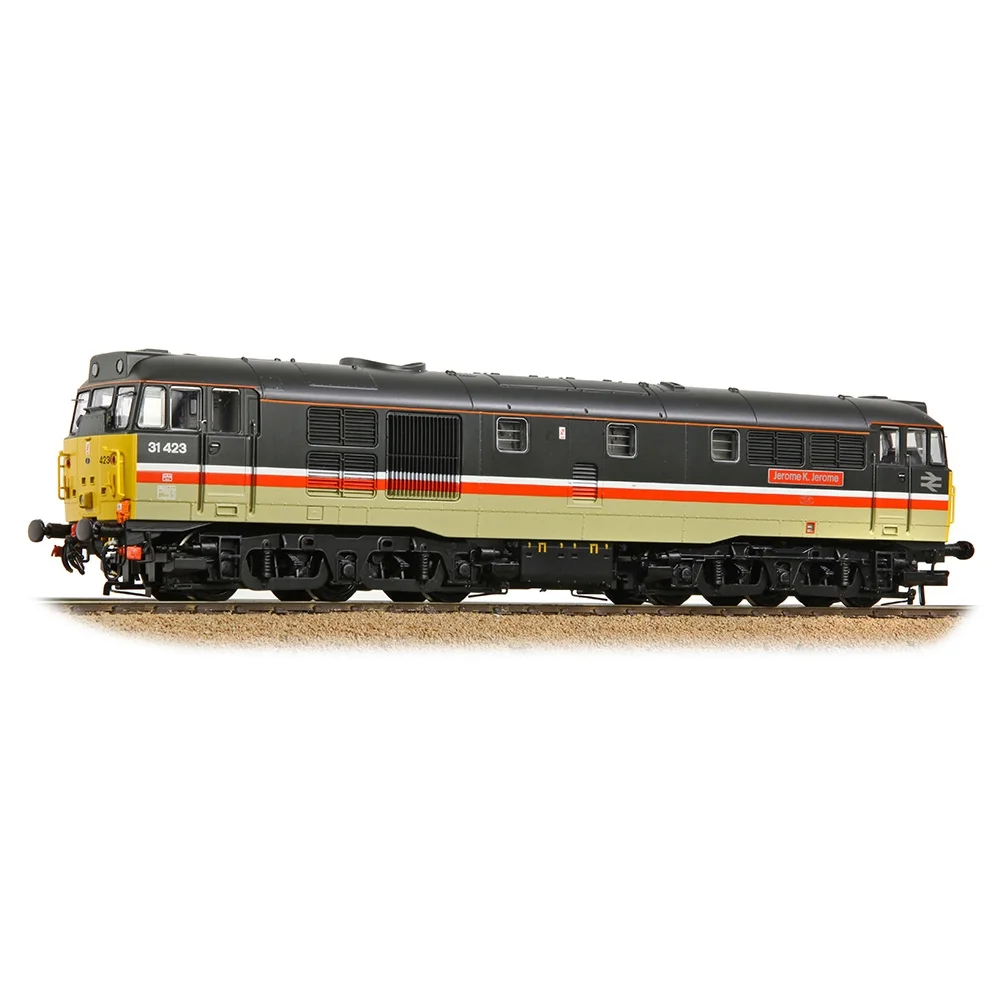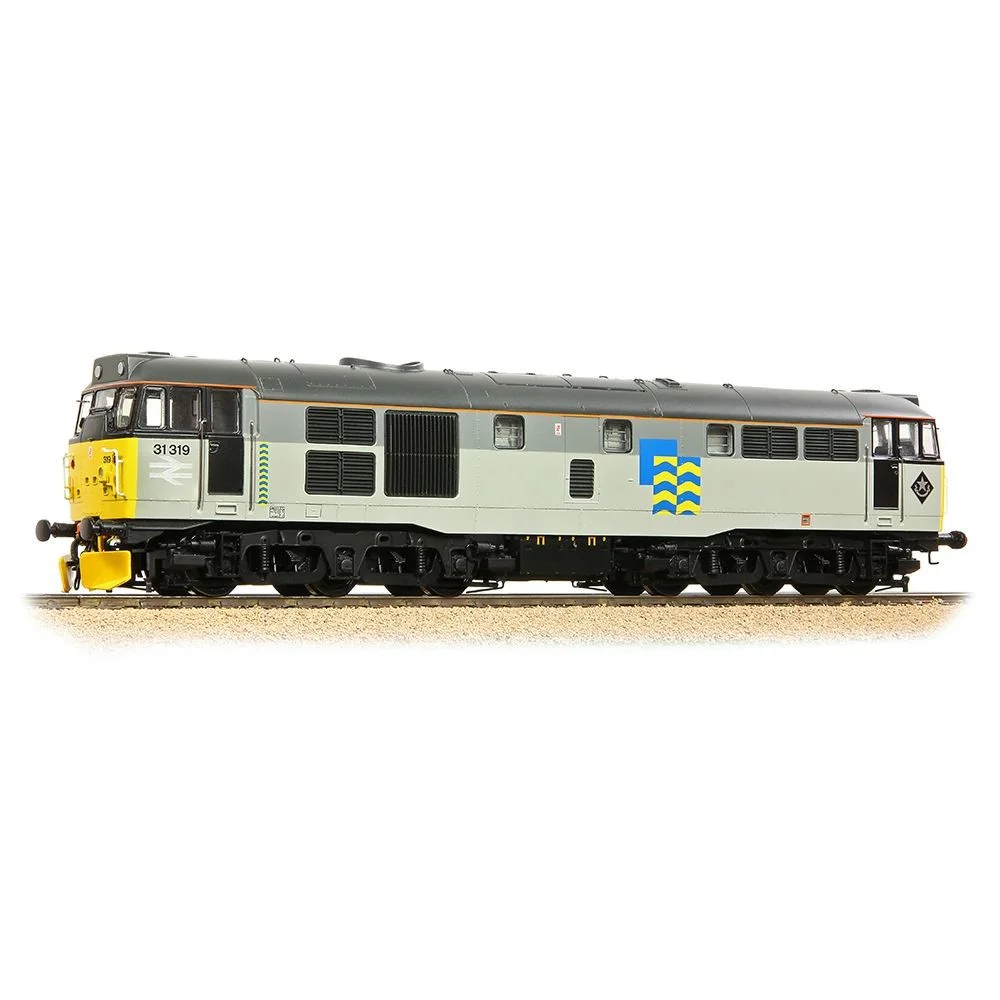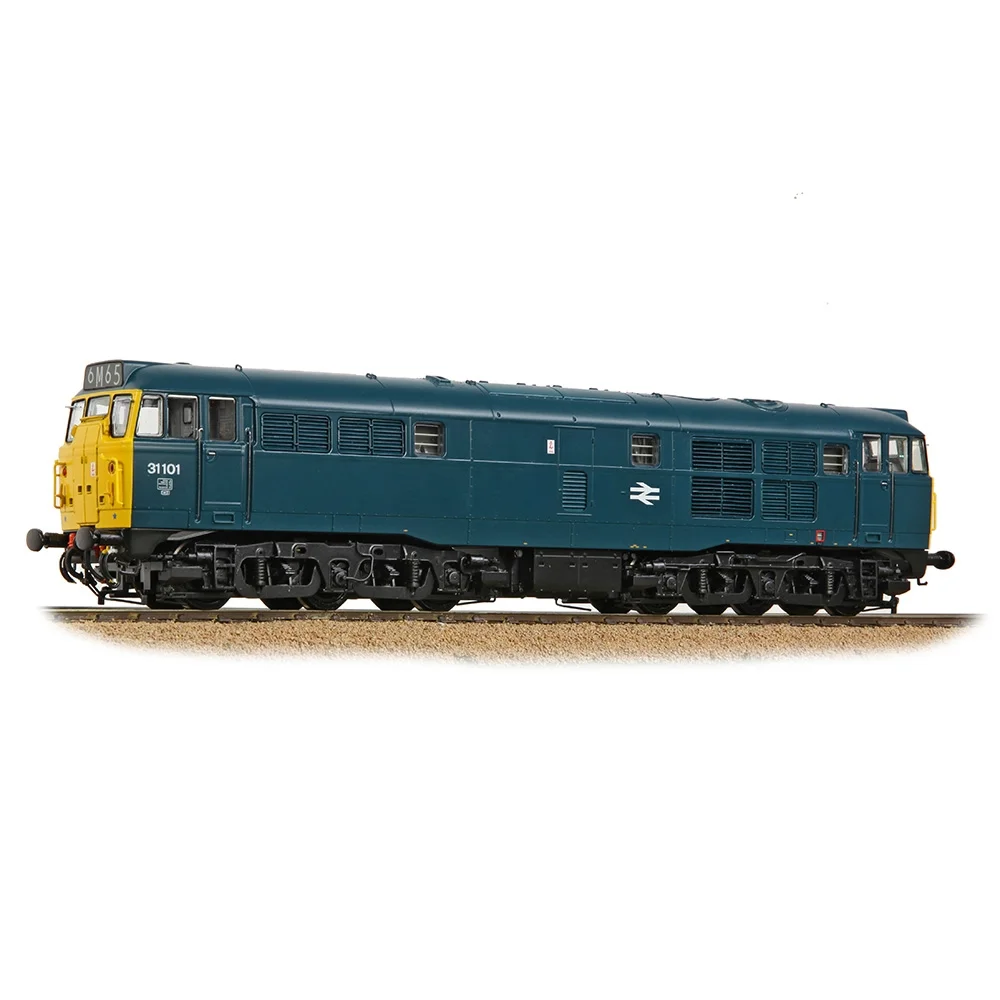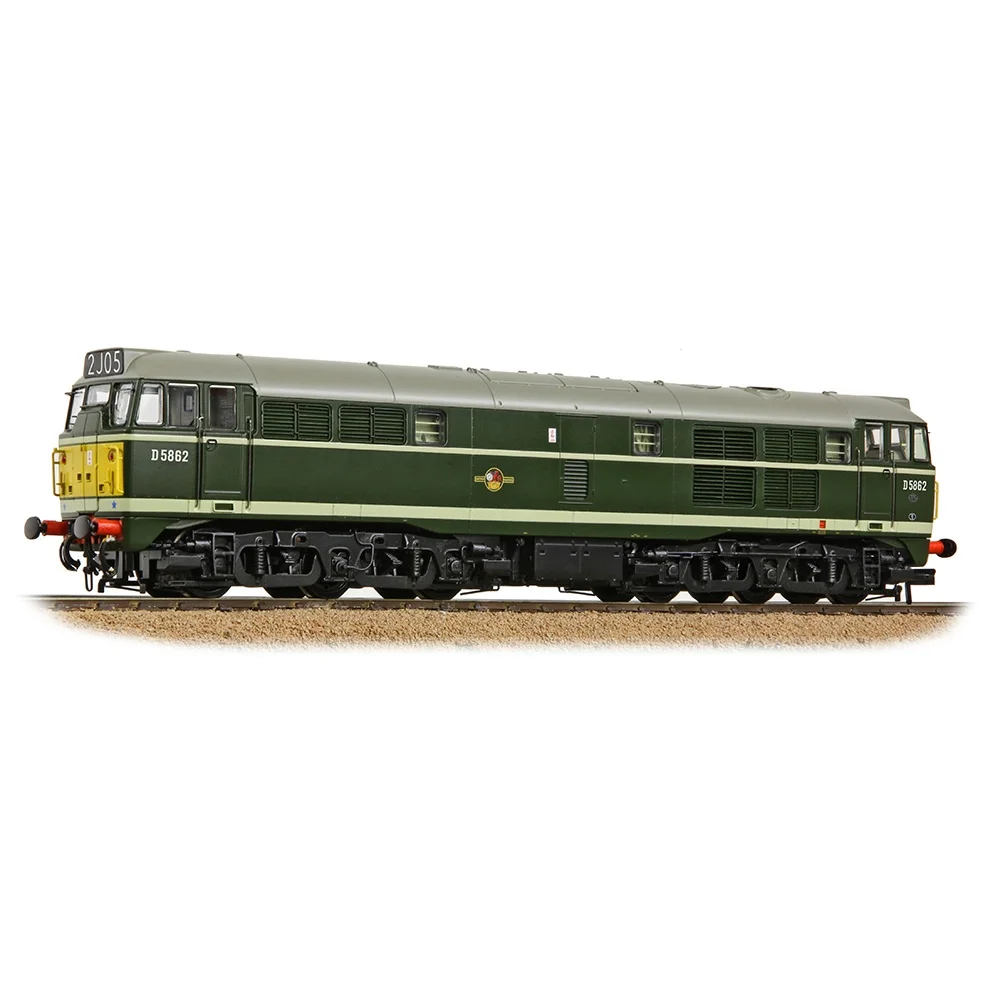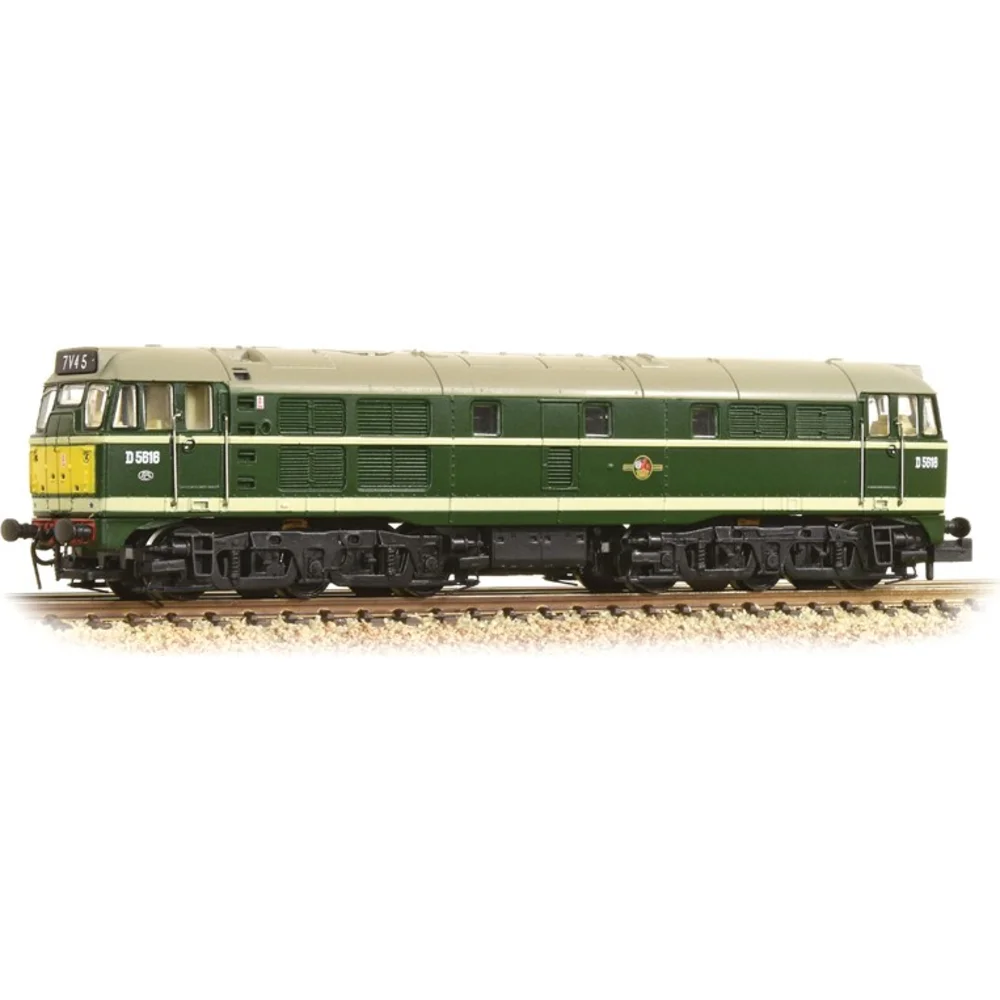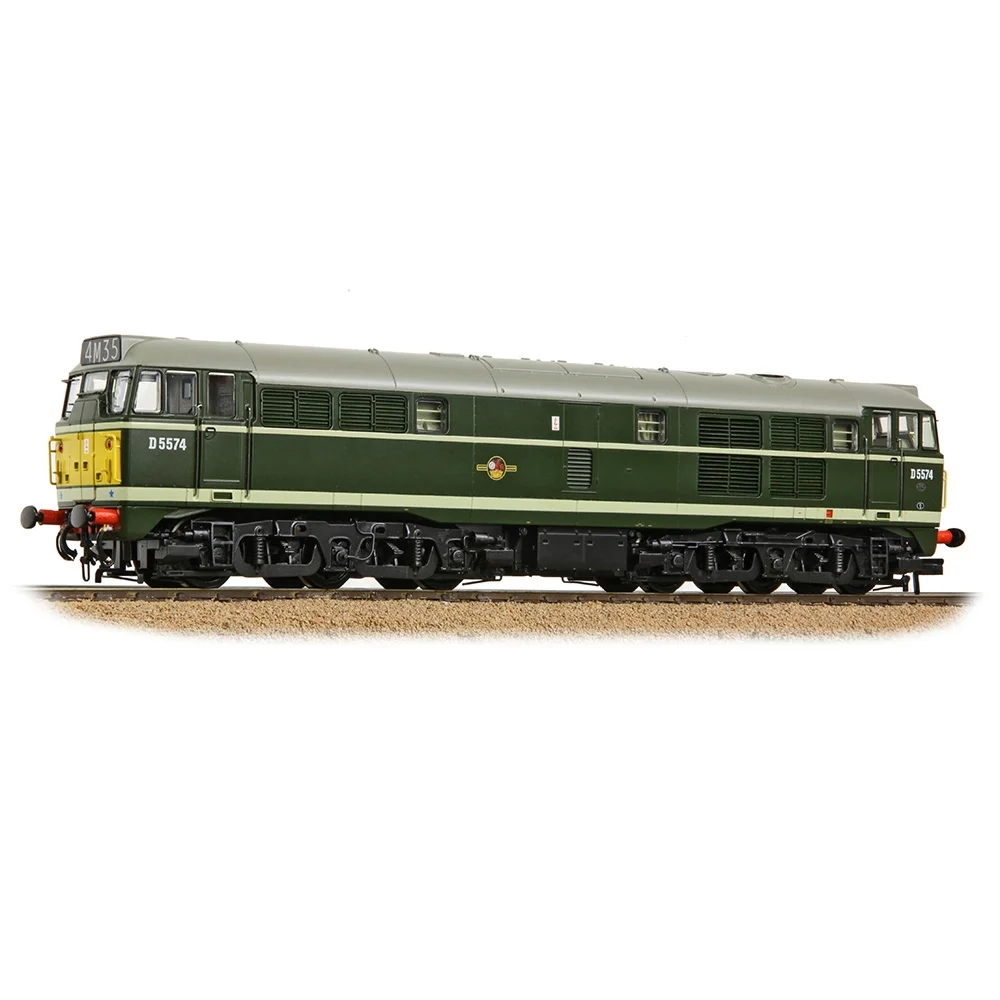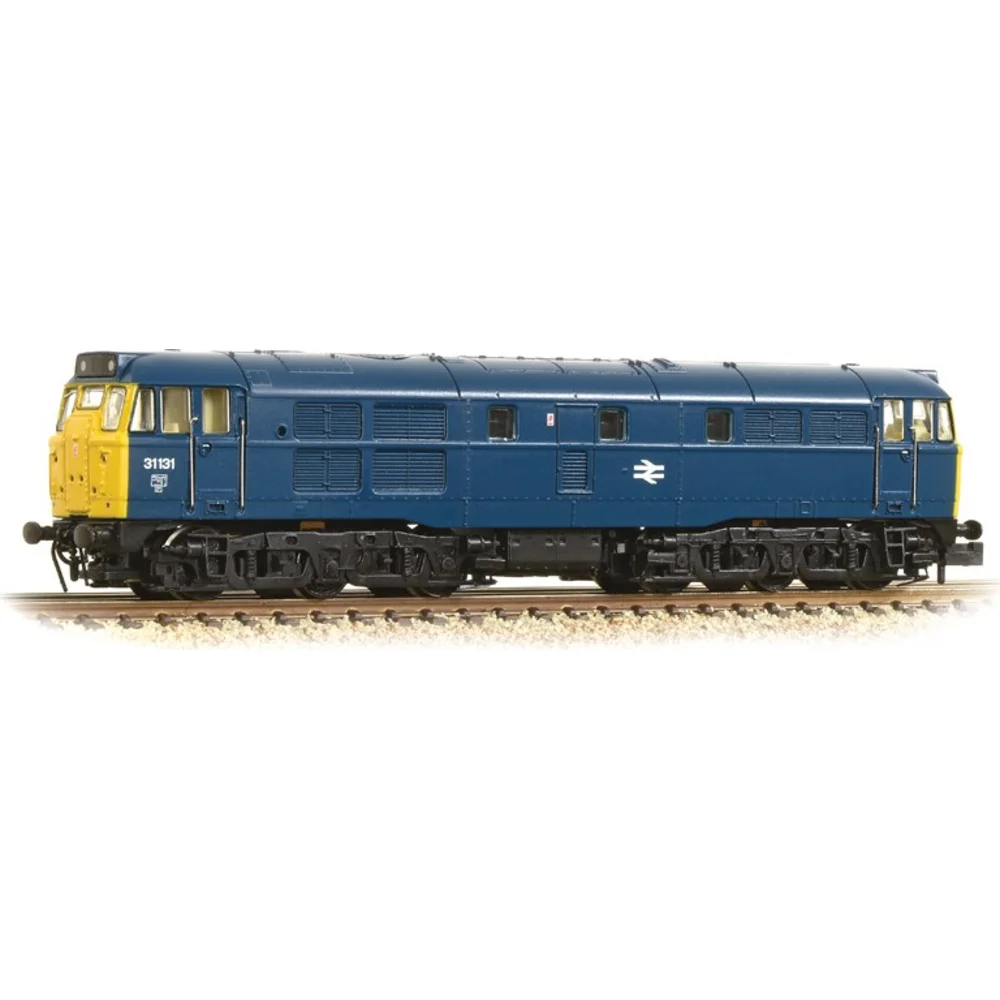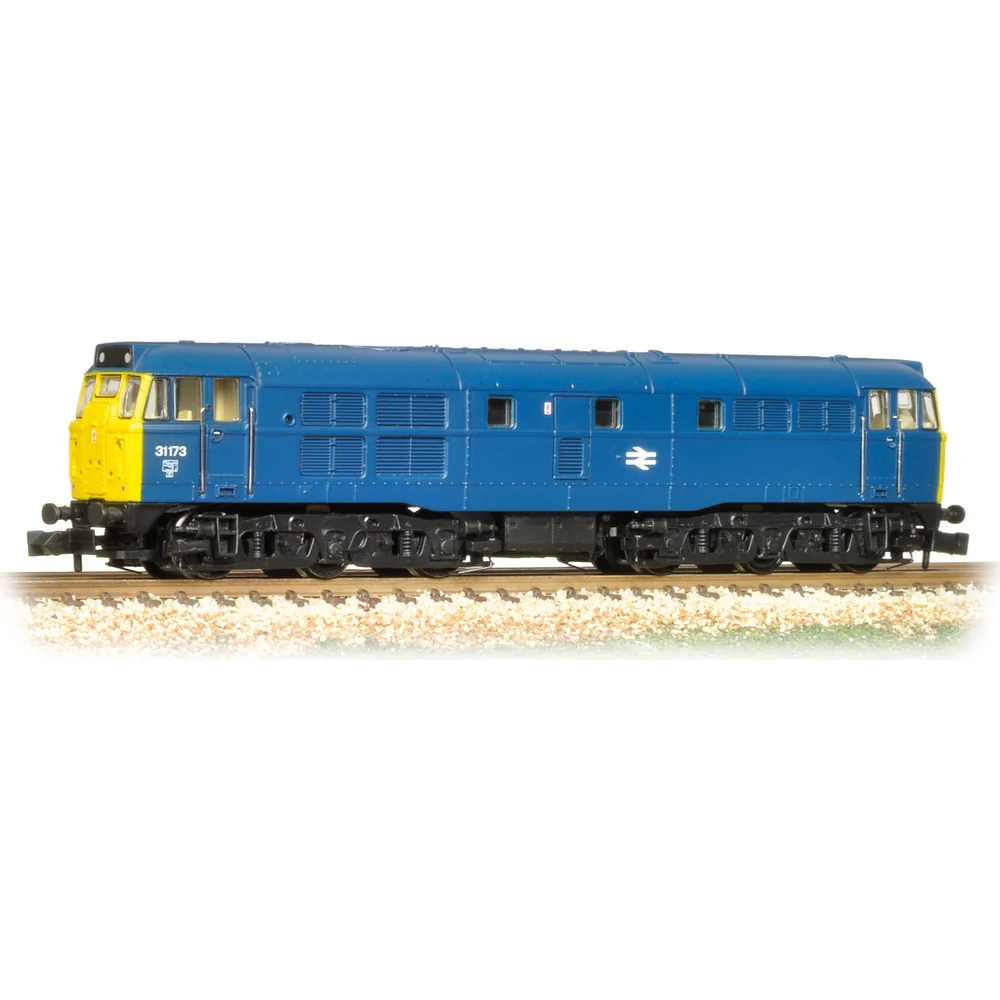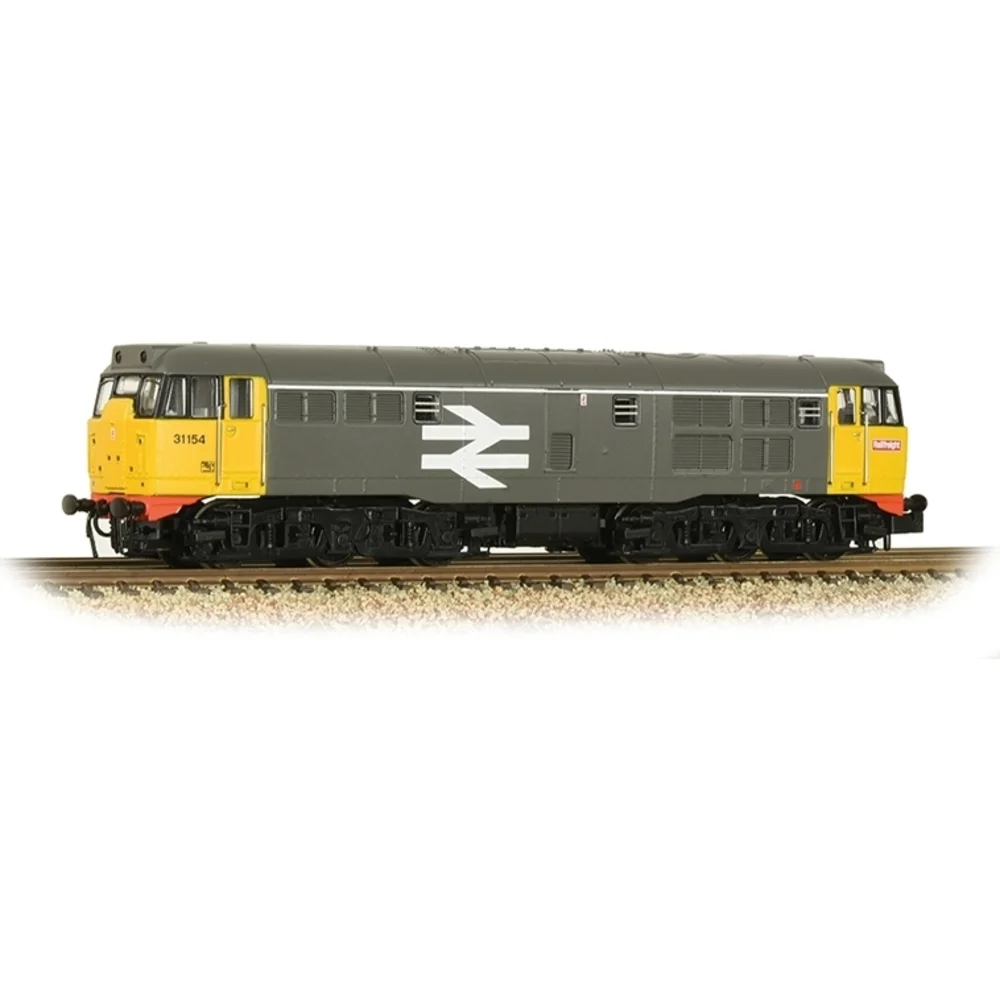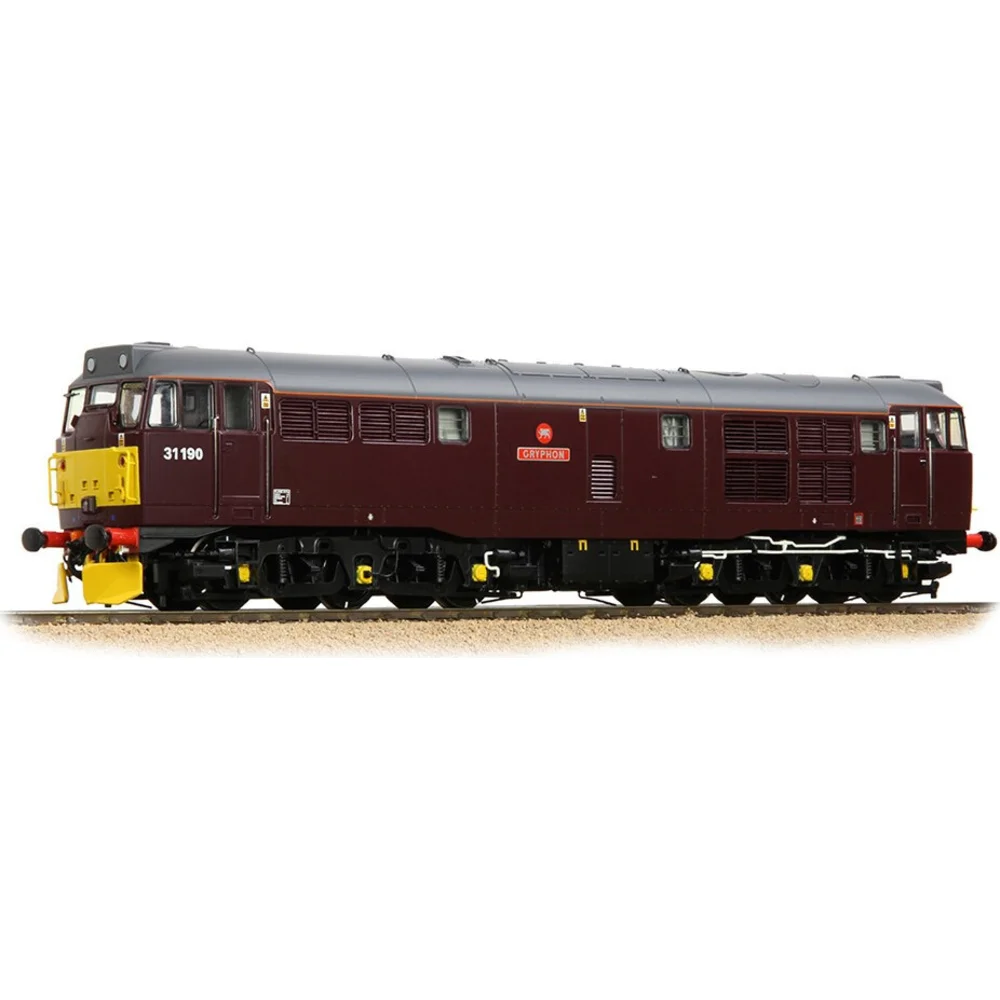Brush Type 2 – From Class 30 to Class 31 Success StoryBrush Type 2 – From Class 30 to Class 31 Success Story
Contents
The Brush Type 2 locomotive represents one of the most remarkable transformation stories in British railway history. Originally introduced in 1957 as part of the modernisation plan's Pilot Scheme, these distinctive A1A-A1A diesel-electric locomotives experienced a complete metamorphosis that saw them evolve from problematic TOPS Class 30 failures into dependable TOPS Class 31 workhorses that served for over six decades.
Built by Brush Traction at Loughborough between 1957 and 1962, the 263 locomotives of this design initially struggled with unreliable Mirrlees engines that earned them unflattering nicknames and operational frustration. However, the comprehensive re-engining programme of 1964-1969, which saw the entire fleet fitted with proven English Electric power units, transformed these locomotives into one of British Railways' most versatile and long-lived classes.
The Brush Type 2 story perfectly illustrates the importance of the TOPS classification system introduced in the early 1970s. Under TOPS, the original Mirrlees-powered locomotives were designated Class 30, whilst the re-engined examples with English Electric engines became Class 31 - a classification change that reflected not merely administrative reorganisation, but genuine technical transformation that fundamentally altered the locomotives' capabilities and reliability.
Quick Takeaways
- Production span: 263 Brush Type 2 locomotives built 1957-1962, representing significant Pilot Scheme investment in diesel technology
- Engine transformation: Complete fleet re-engining 1964-1969 replaced failed Mirrlees JVS12T with proven English Electric 12SVT engines
- TOPS classification evolution: Mirrlees-powered examples designated Class 30, re-engined locomotives became Class 31 under 1973 TOPS system
- Operational success: Post-re-engining service life exceeded 50 years, with final withdrawal 2017 demonstrating transformation effectiveness
- Preservation achievement: 36 locomotives preserved including first-built D5500 and final example D5862, representing complete design evolution
- Modelling excellence: Accurascale revolutionary models feature both Class 30 and Class 31 configurations with era-specific details
- Nickname heritage: "Toffee Apples" (original 20), "Skinheads" (no headcode box), "Goyles," "Peds," and "Gurglers" reflecting varied reactions
Historical Background and Context
The Brush Type 2 emerged from the ambitious but chaotic circumstances surrounding British Railways' 1955 Modernisation Plan, a £1.2 billion programme that aimed to replace steam traction entirely within fifteen years. The plan's architects faced an unprecedented challenge: no single manufacturer possessed the capacity or proven technology to supply the hundreds of diesel locomotives required, necessitating the controversial "Pilot Scheme" approach of ordering smaller batches from multiple suppliers.
Brush Traction of Loughborough entered this competition despite limited main line diesel experience. The company had previously built locomotives for Ceylon Railways using an A1A-A1A wheel arrangement that provided excellent route availability whilst concentrating traction motors on powered axles only. This configuration offered significant advantages for British conditions, where weight restrictions and infrastructure limitations demanded versatile locomotive designs capable of operating across diverse route types.
The political context surrounding the Brush Type 2's development proved crucial to understanding both its initial problems and ultimate success. The Conservative government's modernisation plan represented a massive gamble on diesel technology that remained largely unproven in British conditions. Railway engineers were essentially conducting a vast real-world experiment, learning from failures and successes whilst maintaining essential transport services for the nation's economy.
Contemporary railway literature reveals the uncertainty and excitement surrounding these developments. The Railway Gazette reported extensively on the Pilot Scheme, noting both the potential benefits of competitive evaluation and concerns about maintenance complexity arising from multiple different designs. The engineering press watched with particular interest as British manufacturers attempted to adapt continental and American diesel technology to uniquely British operational requirements.
The timing of the Brush Type 2's introduction coincided with rapid expansion of Brush Traction's manufacturing capabilities. The company was simultaneously developing the Falcon Works facility that would become central to British diesel locomotive production, including the later highly successful Class 47. The Type 2 contract provided essential experience and financial stability that enabled Brush to establish itself as a major player in the emerging diesel locomotive market.
Design and Technical Specifications
The original Brush Type 2 design reflected mid-1950s optimism about diesel technology, incorporating several advanced features that would prove both innovative and problematic. The A1A-A1A wheel arrangement provided optimal weight distribution for mixed traffic duties, whilst the angular bodywork maximised internal space for equipment whilst maintaining acceptable aerodynamics for passenger services.
The initial engine selection represented the design's fundamental flaw. Mirrlees supplied JVS12T engines rated at 1,250hp (D5500-D5519) or 1,365hp (later production), incorporating sophisticated turbocharging and intercooling technology. However, these engines suffered from chronic reliability problems including cylinder head cracking, fuel system failures, and unpredictable performance characteristics that made them unsuitable for intensive railway operation.
Under the TOPS classification system introduced in the early 1970s, these original locomotives were designated Class 30, reflecting their distinct technical specification and operational characteristics. The Mirrlees engines produced a notably different exhaust note and power delivery pattern compared to contemporary diesel designs, creating unique operational requirements that distinguished them from other locomotive classes.
Technical Innovation: The Great Re-engining
The decision to re-engine the entire fleet represented one of British Railways' most successful engineering projects. The English Electric 12SVT engine, a de-rated version of the proven 12CSVT used in Class 37, transformed operational reliability whilst maximising power output within existing electrical system constraints. This comprehensive programme demonstrated BR's commitment to learning from mistakes.
The re-engining programme commenced in 1964 when D5677 received the first English Electric 12SVT installation. This trial proved so successful that British Railways committed to converting the entire fleet, a process that extended through 1969. The English Electric engine provided 1,470hp whilst offering dramatically improved reliability and fuel efficiency compared to the problematic Mirrlees units.
Following re-engining, the locomotives received the new TOPS classification Class 31, reflecting their fundamentally altered technical specification and operational capabilities. This classification change was not merely administrative convenience but recognised genuine transformation that justified separate class designation under the systematic TOPS approach to locomotive management.
The mechanical design incorporated several features that distinguished the Brush Type 2 from contemporary alternatives. The bodyside equipment doors provided excellent maintenance access, whilst the distinctive angular profile reflected 1950s industrial design philosophy. The power bogie design allowed individual axle suspension that improved ride quality and reduced track wear compared to earlier rigid wheelbase configurations.
Service History and Operations
The Brush Type 2 service history divides clearly into two distinct phases: the problematic Class 30 era with Mirrlees engines (1957-1969) and the successful Class 31 period following re-engining (1964-2017). This operational transformation perfectly illustrates the dramatic impact that reliable powerplant technology had on locomotive utility and railway efficiency.
Initial deployment in 1957 concentrated on the Eastern Region, where D5500 entered service at Stratford depot in November. Early operational experience proved frustrating, with frequent engine failures disrupting schedules and creating maintenance headaches that seriously damaged the type's reputation. The Mirrlees engines suffered from unpredictable performance, excessive fuel consumption, and chronic reliability problems that made them unsuitable for intensive railway operation.
Contemporary reports from locomotive crews and maintenance staff reveal the operational difficulties that characterized the Class 30 period. Engine failures occurred without warning, often stranding trains and requiring rescue operations that disrupted entire regional timetables. The sophisticated Mirrlees technology, whilst advanced in theory, proved incompatible with the demanding conditions and maintenance standards that characterized British railway operation.
Operational Transformation: The Re-engining Success
The English Electric 12SVT engine installation created essentially new locomotives within existing bodyshells. Post-1964 reliability improved dramatically, enabling widespread deployment beyond the original Eastern Region allocation. Class 31 locomotives proved their worth through decades of dependable service across passenger, freight, and specialist duties.
The re-engining programme's success became evident immediately following D5677's English Electric engine installation in 1964. Reliability improvements were so dramatic that British Railways committed to converting the entire fleet, recognizing that the programme represented genuine solution to fundamental operational problems rather than mere incremental improvement.
Post-re-engining deployment as Class 31 locomotives expanded far beyond the original Eastern Region concentration. The Western Region allocated substantial numbers to Bath Road (Bristol), Old Oak Common (London), and other strategic depots, where they handled everything from branch line passenger services to main line freight duties. Their operational versatility enabled deployment on services ranging from London suburban workings to Devon holiday expresses.
The operational pattern that emerged following TOPS classification demonstrated the locomotives' remarkable adaptability. Class 31/1 examples with steam heating handled traditional coaching stock, whilst later Class 31/4 conversions with electric train heating could operate modern air-conditioned trains. This flexibility enabled continued utility despite evolving technological requirements and changing operational patterns.
Notable operational achievements included Royal Train duties, with several locomotives earning prestige through conveying Her Majesty Queen Elizabeth II. These assignments demonstrated the class's capabilities and reliability, proving that the re-engined Brush Type 2 had overcome its problematic origins to achieve genuine operational excellence.
The privatisation era brought new challenges as different operators evaluated locomotive requirements against changing traffic patterns. English Welsh & Scottish Railway inherited substantial fleets and initially maintained them for freight duties, though the introduction of more powerful Class 66 locomotives gradually reduced requirements. However, specialized operators continued using Class 31 locomotives for passenger services, infrastructure work, and heritage operations.
Fleet
| Ordered By | Built By | Built | Withdrawn | Length Of Service | Running Numbers | Names |
|---|---|---|---|---|---|---|
| British Railways | Brush Traction | October 1958 | January 1993 | 34.3 years | BR D5518, BR 31101 | |
| British Railways | Brush Traction | December 1959 | February 1992 | 32.2 years | BR D5574, BR 31156 | |
| British Railways | Brush Traction | April 1960 | January 1999 | 38.8 years | BR D5611, BR 31188 | |
| British Railways | Brush Traction | May 1960 | May 2015 | 55.0 years | BR D5613, BR 5613, BR 31190 | Gryphon |
| British Railways | Brush Traction | June 1960 | September 1996 | 36.3 years | BR D5621, BR 31197, BR 31423 | Jerome K. Jerome |
| British Railways | Brush Traction | July 1962 | September 1982 | 20.2 years | BR D5848, BR 5848, BR 31314 | |
| British Railways | Brush Traction | October 1962 | December 1995 | 33.2 years | BR D5862, BR 31327 | Phillips Imperial |
Withdrawal/Preservation/Legacy
The withdrawal pattern of Brush Type 2 locomotives reflects both their technical evolution and the systematic approach that TOPS classification enabled. The problematic original Class 30 configuration effectively disappeared during the re-engining programme of 1964-1969, whilst the transformed Class 31 variants served for decades until final withdrawal in 2017.
Early withdrawals during the late 1970s concentrated on the non-standard Class 31/0 sub-class, whose Red Circle multiple working equipment made them incompatible with standard fleet operation. These locomotives had originally been part of the pilot scheme batch (D5500-D5519), earning the nickname "Toffee Apples" due to their distinctive control key configuration.
The TOPS classification system facilitated systematic fleet management that enabled British Railways to optimize locomotive utilization whilst planning orderly replacement programmes. The clear distinction between Class 30 (Mirrlees-powered) and Class 31 (English Electric-powered) configurations provided operational clarity that had been lacking during the confused early years of diesel development.
Preservation Success Story
The preservation of 36 Brush Type 2 locomotives represents one of the most comprehensive rescue efforts in British railway heritage. Notable survivors include D5500 (the first locomotive built), preserved at the National Railway Museum, and D5862 (the final example), demonstrating the complete evolution from problematic Class 30 to successful Class 31.
The final operational phase under Network Rail demonstrated the enduring utility of the English Electric-powered design. Locomotives like 31233 continued providing reliable service for infrastructure testing and inspection duties until 2017, achieving over 50 years of operational life that vindicated the comprehensive re-engining programme of the 1960s.
Preservation efforts began early, with several locomotives entering heritage railway ownership during the 1980s when withdrawal accelerated. The preservation movement recognized the Brush Type 2's historical significance as representing both the challenges and ultimate successes of British diesel development, ensuring representative examples of all major sub-classes survived for future generations.
The engineering legacy of the Brush Type 2 extends far beyond the individual locomotives. The lessons learned during the Mirrlees engine problems and subsequent re-engining programme influenced British Railways' locomotive procurement policies for decades, emphasizing proven reliability over theoretical advancement. The success of the English Electric engine installation demonstrated that comprehensive modification programmes could transform unsuccessful designs into valuable assets.
Heritage railway operations currently maintain several locomotives in working condition, enabling authentic recreation of 1960s-1990s railway operations. The distinctive sound characteristics that distinguished Class 30 (Mirrlees) from Class 31 (English Electric) configurations provide educational opportunities that illustrate the dramatic transformation achieved through the re-engining programme.
Modelling Significance and Scale Replications
The Brush Type 2 represents exceptional modelling significance due to its unique position spanning both the problematic early diesel era and the successful mature period of British Railways operation. The distinct technical configurations that justified separate Class 30 and Class 31 TOPS classifications create fascinating modelling opportunities that reflect genuine prototype evolution.
Accurascale has revolutionised Brush Type 2 modelling with their groundbreaking range that correctly represents both Class 30 (Mirrlees-powered) and Class 31 (English Electric-powered) configurations. These models feature era-specific details including different exhaust port arrangements, engine block visibility through bodyside windows, and authentic livery applications that reflect the locomotives' complex evolution.
The modelling challenge presented by the Brush Type 2 lies in accurately representing the subtle but crucial differences between engine configurations. Class 30 models require twin exhaust ports reflecting the Mirrlees turbo-charging system, whilst Class 31 examples feature the single exhaust arrangement associated with English Electric engines. These technical details significantly impact visual authenticity for knowledgeable enthusiasts.
Advanced Modelling: Era-Specific Accuracy
Accurascale models excel at capturing the technical evolution from Class 30 to Class 31. Key differences include exhaust port configuration, roof fan arrangements, and internal engine block details visible through bodyside grilles. These authentic details enable modellers to represent specific time periods with unprecedented accuracy.
Hornby and Bachmann also produce excellent Class 31 models, though these primarily represent the post-re-engining configuration that dominated operational service. Both manufacturers offer comprehensive livery coverage spanning British Railways corporate blue through privatisation era schemes, enabling authentic recreation of multiple historical periods.
The sound decoder opportunities presented by Brush Type 2 modelling are particularly fascinating. Bachmann have developed separate sound projects for Class 30 (Mirrlees engine) and Class 31 (English Electric engine) configurations, enabling authentic audio representation of the dramatic transformation achieved through re-engining. The distinctive exhaust notes provide immediate auditory recognition of specific engine types.
Scale options span all popular gauges, with N gauge models available from Graham Farish and Dapol that capture the distinctive proportions whilst providing reliable running characteristics. OO gauge dominates availability, reflecting the scale's popularity amongst British modellers and the manufacturers' focus on domestic market requirements.
Historical accuracy considerations require careful attention to specific sub-class variations and livery applications. Early "skinhead" examples (lacking roof headcode boxes) represent specific prototype batches, whilst later standard production locomotives feature the roof-mounted route indicator equipment that became characteristic of the type.
Models
| Builder | Catalogue # | Year | Running # | Class, Operator (Livery) "Name" | Scale | Finish | Era | DCC |
|---|---|---|---|---|---|---|---|---|
| Accurascale | ACC3188-DCC | 31602 | British Rail Class 31, Fragonset Railways (Black) "Chimaera" | OO | P | 9 | DCCS | |
| Bachmann | 35-801 | 2024 | D5564 | British Rail Class 31, British Railways (Green with Late Crest) | OO | P | 5 | PluX22 |
| Bachmann | 35-801A | 2024 | D5617 | British Rail Class 31, British Railways (Green with Late Crest) | OO | P | 5 | PluX22 |
| Bachmann | 35-801ASF | 2024 | D5617 | British Rail Class 31, British Railways (Green with Late Crest) | OO | P | 5 | DCCS |
| Bachmann | 35-801ASFX | 2024 | D5617 | British Rail Class 31, British Railways (Green with Late Crest) | OO | P | 5 | DCCS |
| Bachmann | 35-801SF | 2024 | D5564 | British Rail Class 31, British Railways (Green with Late Crest) | OO | P | 5 | DCCS |
| Bachmann | 35-801SFX | 2024 | D5564 | British Rail Class 31, British Railways (Green with Late Crest) | OO | P | 5 | DCCS |
| Bachmann | 35-802 | 2025 | D5574 | British Rail Class 30, British Railways (Green with Small Yellow Panels) | OO | P | 5 | PluX22 |
| Bachmann | 35-802A | 2025 | D5862 | British Rail Class 30, British Railways (Green with Small Yellow Panels) | OO | P | 5 | PluX22 |
| Bachmann | 35-802ASF | 2025 | D5862 | British Rail Class 30, British Railways (Green with Small Yellow Panels) | OO | P | 5 | DCCS |
| Bachmann | 35-802ASFX | 2025 | D5862 | British Rail Class 30, British Railways (Green with Small Yellow Panels) | OO | P | 5 | DCCS |
| Bachmann | 35-802SF | 2025 | D5574 | British Rail Class 30, British Railways (Green with Small Yellow Panels) | OO | P | 5 | DCCS |
| Bachmann | 35-802SFX | 2025 | D5574 | British Rail Class 30, British Railways (Green with Small Yellow Panels) | OO | P | 5 | DCCS |
| Bachmann | 35-803A | 2025 | 5848 | British Rail Class 31/1, British Rail (Blue) | OO | P | 6 | PluX22 |
| Bachmann | 35-803ASF | 2025 | 5848 | British Rail Class 31/1, British Rail (Blue) | OO | P | 6 | DCCS |
| Bachmann | 35-803ASFX | 2025 | 5848 | British Rail Class 31/1, British Rail (Blue) | OO | P | 6 | DCCS |
| Bachmann | 35-804 | 2025 | 31101 | British Rail Class 31/1, British Rail (Blue) | OO | P | 7 | PluX22 |
| Bachmann | 35-804SF | 2025 | 31101 | British Rail Class 31/1, British Rail (Blue) | OO | P | 7 | DCCS |
| Bachmann | 35-804SFX | 2025 | 31101 | British Rail Class 31/1, British Rail (Blue) | OO | P | 7 | DCCS |
| Bachmann | 35-805 | 2024 | 31123 | British Rail Class 31, British Rail (Blue) | OO | P | 7 | PluX22 |
| Bachmann | 35-805A | 2024 | 31293 | British Rail Class 31, British Rail (Blue) | OO | P | 7 | PluX22 |
| Bachmann | 35-805ASF | 2024 | 31293 | British Rail Class 31, British Rail (Blue) | OO | P | 7 | DCCS |
| Bachmann | 35-805ASFX | 2024 | 31293 | British Rail Class 31, British Rail (Blue) | OO | P | 7 | DCCS |
| Bachmann | 35-805SF | 2024 | 31123 | British Rail Class 31, British Rail (Blue) | OO | P | 7 | DCCS |
| Bachmann | 35-805SFX | 2024 | 31123 | British Rail Class 31, British Rail (Blue) | OO | P | 7 | DCCS |
| Bachmann | 35-820K* | 2025 | 31190 | British Rail Class 31/1, West Coast Railways (Maroon) "Gryphon" | OO | P | 9 | PluX22 |
| Bachmann | 35-820KSF* | 2025 | 31190 | British Rail Class 31/1, West Coast Railways (Maroon) "Gryphon" | OO | P | 9 | DCCS |
| Bachmann | 35-820KSFX* | 2025 | 31190 | British Rail Class 31/1, West Coast Railways (Maroon) "Gryphon" | OO | P | 9 | DCCS |
| Bachmann | 35-821 | 2024 | 31180 | British Rail Class 31, British Rail Railfreight (Grey with Red Stripe) | OO | P | 8 | PluX22 |
| Bachmann | 35-821A | 2024 | 31149 | British Rail Class 31, British Rail Railfreight (Grey with Red Stripe) | OO | P | 8 | PluX22 |
| Bachmann | 35-821ASF | 2024 | 31149 | British Rail Class 31, British Rail Railfreight (Grey with Red Stripe) | OO | P | 8 | DCCS |
| Bachmann | 35-821ASFX | 2024 | 31149 | British Rail Class 31, British Rail Railfreight (Grey with Red Stripe) | OO | P | 8 | DCCS |
| Bachmann | 35-821SF | 2024 | 31180 | British Rail Class 31, British Rail Railfreight (Grey with Red Stripe) | OO | P | 8 | DCCS |
| Bachmann | 35-821SFX | 2024 | 31180 | British Rail Class 31, British Rail Railfreight (Grey with Red Stripe) | OO | P | 8 | DCCS |
| Bachmann | 35-822 | 2025 | 31188 | British Rail Class 31/1, British Rail (Engineers Grey & Yellow) | OO | P | 8 | PluX22 |
| Bachmann | 35-822SF | 2025 | 31188 | British Rail Class 31/1, British Rail (Engineers Grey & Yellow) | OO | P | 8 | DCCS |
| Bachmann | 35-822SFX | 2025 | 31188 | British Rail Class 31/1, British Rail (Engineers Grey & Yellow) | OO | P | 8 | DCCS |
| Bachmann | 35-823 | 2024 | 31319 | British Rail Class 31, British Rail Railfreight (Petroleum Triple Grey) | OO | P | 8 | PluX22 |
| Bachmann | 35-823A | 2024 | 31304 | British Rail Class 31, British Rail Railfreight (Petroleum Triple Grey) | OO | P | 8 | PluX22 |
| Bachmann | 35-823ASF | 2024 | 31304 | British Rail Class 31, British Rail Railfreight (Petroleum Triple Grey) | OO | P | 8 | DCCS |
| Bachmann | 35-823ASFX | 2024 | 31304 | British Rail Class 31, British Rail Railfreight (Petroleum Triple Grey) | OO | P | 8 | DCCS |
| Bachmann | 35-823SF | 2024 | 31319 | British Rail Class 31, British Rail Railfreight (Petroleum Triple Grey) | OO | P | 8 | DCCS |
| Bachmann | 35-823SFX | 2024 | 31319 | British Rail Class 31, British Rail Railfreight (Petroleum Triple Grey) | OO | P | 8 | DCCS |
| Bachmann | 35-825 | 2024 | 31435 | British Rail Class 31, British Rail (Blue) | OO | P | 8 | PluX22 |
| Bachmann | 35-825SF | 2024 | 31435 | British Rail Class 31, British Rail (Blue) | OO | P | 8 | DCCS |
| Bachmann | 35-825SFX | 2024 | 31435 | British Rail Class 31, British Rail (Blue) | OO | P | 8 | DCCS |
| Bachmann | 35-827 | 2025 | 31423 | British Rail Class 31/4, British Rail InterCity (Mainline) "Jerome K. Jerome" | OO | P | 8 | PluX22 |
| Bachmann | 35-827SF | 2025 | 31423 | British Rail Class 31/4, British Rail InterCity (Mainline) "Jerome K. Jerome" | OO | P | 8 | DCCS |
| Bachmann | 35-827SFX | 2025 | 31423 | British Rail Class 31/4, British Rail InterCity (Mainline) "Jerome K. Jerome" | OO | P | 8 | DCCS |
| Bachmann | 35-830 | 2024 | 31407 | British Rail Class 31, Mainline Freight Limited (Blue) | OO | P | 9 | PluX22 |
| Bachmann | 35-830SF | 2024 | 31407 | British Rail Class 31, Mainline Freight Limited (Blue) | OO | P | 9 | DCCS |
| Bachmann | 35-830SFX | 2024 | 31407 | British Rail Class 31, Mainline Freight Limited (Blue) | OO | P | 9 | DCCS |
| Graham Farish | 370-202 | 2007 | 31135 | British Rail Class 31, British Rail (Grey & Yellow (Dutch)) | N | P | 8 | No |
| Graham Farish | 371-100 | 2005 | 31601 | British Rail Class 31, Fragonset Railways (Black) "Bletchley Park" | N | P | 9 | No |
| Graham Farish | 371-101 | 2005 | 31410 | British Rail Class 31, British Rail Regional Railways (Blue & Grey) | N | P | 8 | No |
| Graham Farish | 371-102 | 2006 | 31285 | British Rail Class 31, British Rail Railfreight (Grey with Red Stripe) | N | P | 8 | No |
| Graham Farish | 371-103 | 2007 | 31430 | British Rail Class 31, British Rail (Blue) "Sister Dora" | N | P | 7/8 | No |
| Graham Farish | 371-104 | 2009 | D5672 | British Rail Class 31, British Railways (Green with Late Crest) | N | P | 5 | No |
| Graham Farish | 371-105 | 2011 | 31602 | British Rail Class 31, Network Rail (Yellow) "Driver Dave Green" | N | P | 9 | No |
| Graham Farish | 371-110 | 2013 | D5826 | British Rail Class 31, British Rail (Green) | N | P | 6 | DCC6 |
| Graham Farish | 371-111 | 2013 | D5596 | British Rail Class 31, British Railways (Green) | N | P | 5 | DCC6 |
| Graham Farish | 371-111A | 2018 | D5616 | British Rail Class 31, British Railways (Green with Late Crest) | N | P | 5/6 | N18DCC |
| Graham Farish | 371-111ASF | 2022 | D5616 | British Rail Class 31, British Railways (Green with Late Crest) | N | P | 5/6 | DCCS |
| Graham Farish | 371-112 | 2013 | 31173 | British Rail Class 31, British Rail (Blue) | N | P | 7 | DCC6 |
| Graham Farish | 371-112A | 2018 | 31131 | British Rail Class 31, British Rail (Blue) | N | P | 7/8 | N18DCC |
| Graham Farish | 371-112ASF | 2022 | 31131 | British Rail Class 31, British Rail (Blue) | N | P | 7/8 | DCCS |
| Graham Farish | 371-112B | 2022 | 31309 | British Rail Class 31, British Rail (Blue) "Cricklewood" | N | P | 8 | N18DCC |
| Graham Farish | 371-112BSF | 2022 | 31309 | British Rail Class 31, British Rail (Blue) "Cricklewood" | N | P | 8 | DCCS |
| Graham Farish | 371-113 | 2018 | 97204 | British Rail Class 31, British Rail Research Division (RTC) | N | P | 8 | N18DCC |
| Graham Farish | 371-113SF | 2021 | 97204 | British Rail Class 31, British Rail Research Division (RTC) | N | P | 8 | DCCS |
| Graham Farish | 371-135 | 2017 | 31154 | British Rail Class 31, British Rail Railfreight (Blue) | N | P | 8 | N18DCC |
| Graham Farish | 371-135DB | 2022 | 31423 | British Rail Class 31, British Rail InterCity (Mainline) "Jerome K. Jerome" | N | P | 8 | N18DCC |
| Graham Farish | 371-135DBSF | 2022 | 31423 | British Rail Class 31, British Rail InterCity (Mainline) "Jerome K. Jerome" | N | P | 8 | DCCS |
| Graham Farish | 371-135SF | 2022 | 31154 | British Rail Class 31, British Rail Railfreight (Blue) | N | P | 8 | DCCS |
| Graham Farish | 371-136 | 2017 | 31319 | British Rail Class 31, British Rail Trainload Freight (Two-Tone Grey) | N | P | 8 | N18DCC |
| Graham Farish | 371-136RJ | 2022 | 31130 | British Rail Class 31, British Rail Railfreight (Coal Triple Grey) "Calder Hall Power Station" | N | P | 8 | N18DCC |
| Graham Farish | 371-136RJSF | 2022 | 31130 | British Rail Class 31, British Rail Railfreight (Coal Triple Grey) "Calder Hall Power Station" | N | P | 8 | DCCS |
| Graham Farish | 371-136SF | 2022 | 31319 | British Rail Class 31, British Rail Trainload Freight (Two-Tone Grey) | N | P | 8 | DCCS |
| Graham Farish | 371-137 | 2017 | 31602 | British Rail Class 31, Network Rail (Yellow) | N | P | 9 | N18DCC |
| Graham Farish | 371-137SD | 2022 | 31466 | British Rail Class 31, English, Welsh & Scottish Railway (Maroon & Gold) | N | P | 9 | N18DCC |
| Graham Farish | 371-137SDSF | 2022 | 31466 | British Rail Class 31, English, Welsh & Scottish Railway (Maroon & Gold) | N | P | 9 | DCCS |
| Graham Farish | 371-137SF | 2021 | 31602 | British Rail Class 31, Network Rail (Yellow) | N | P | 9 | DCCS |
| Graham Farish | 371-137TL | 2022 | 31407 | British Rail Class 31, Mainline Freight Limited (Blue) | N | P | 9 | N18DCC |
| Graham Farish | 371-137TLSF | 2022 | 31407 | British Rail Class 31, Mainline Freight Limited (Blue) | N | P | 9 | DCCS |
| Heljan | 3100 | British Rail Class 31, British Railways (Green with Late Crest) | O | P | 5 | No | ||
| Heljan | 3101 | British Rail Class 31, British Rail (Blue) | O | P | 6 | No | ||
| Heljan | 3102 | British Rail Class 31, British Rail (Blue) | O | P | 6 | No | ||
| Heljan | 3103* | British Rail Class 31, British Rail (Blue) | O | P | 6/7 | DCCW | ||
| Heljan | 3104 | British Rail Class 31, British Railways (Green with Late Crest) | O | P | 5 | DCCR | ||
| Heljan | 3105 | British Rail Class 31, British Rail (Blue) | O | P | 6/7 | DCCR | ||
| Heljan | 3106 | D5578 | British Rail Class 31, British Rail (Electric Blue) | O | P | 6/7 | DCCR | |
| Heljan | 3107 | D5579 | British Rail Class 31, British Railways (Chromatic Blue) | O | P | 5 | DCCR | |
| Heljan | 3108 | British Rail Class 31, British Railways (Golden Ochre) | O | P | 5 | DCCR | ||
| Heljan | 3109 | 97204 | British Rail Class 31, British Rail | O | P | 8 | DCCW | |
| Heljan | 3120 | 31296 | British Rail Class 31, British Rail Railfreight (Grey) "Amlwch Freighter" | O | P | 8 | DCCW | |
| Heljan | 3121 | British Rail Class 31, British Rail Railfreight (Grey with Red Stripe) | O | P | 8 | DCCW | ||
| Heljan | 3122 | British Rail Class 31, British Rail Railfreight (Coal Triple Grey) | O | P | 8 | DCCW | ||
| Heljan | 3123 | British Rail Class 31, British Rail (Grey & Yellow (Dutch)) | O | P | 8 | DCCW | ||
| Heljan | 3140 | British Rail Class 31, British Rail (Blue) | O | P | 6/7 | DCCW | ||
| Heljan | 3141 | British Rail Class 31, British Rail InterCity (Mainline) | O | P | 8 | DCCW | ||
| Heljan | 3142 | British Rail Class 31, British Rail Regional Railways (Blue & White) | O | P | 8 | DCCW | ||
| Heljan | 3143 | 31466 | British Rail Class 31, English, Welsh & Scottish Railway (Maroon & Gold) | O | P | 9 | DCCW | |
| Heljan | 3144 | British Rail Class 31, Network Rail (Yellow) | O | P | 9 | DCCW | ||
| Hornby | R2413 | 2004 | 31270 | British Rail Class 31, British Rail (Blue) | OO | W | 7 | DCC8 |
| Hornby | R2413A | 2007 | 31174 | British Rail Class 31, British Rail (Blue) | OO | W | 7 | DCC8 |
| Hornby | R2413B | 2010 | 31268 | British Rail Class 31, British Rail (Blue) | OO | P | 7 | DCC8 |
| Hornby | R2420 | 2004 | D5512 | British Rail Class 31, British Railways (Green with Late Crest) | OO | P | 5 | DCC8 |
| Hornby | R2420A | 2010 | D5511 | British Rail Class 31, British Railways (Green with Late Crest) | OO | P | 5 | DCC8 |
| Hornby | R2421 | 2004 | 31110 | British Rail Class 31, British Rail (Grey & Yellow (Dutch)) | OO | P | 8 | DCC8 |
| Hornby | R2526* | 31130 | British Rail Class 31, British Rail Railfreight (Coal Triple Grey) "Calder Hall Power Station" | OO | P | 8 | DCC8 | |
| Hornby | R2571 | 2006 | 31111 | British Rail Class 31, British Rail (Blue) | OO | P | 7 | DCC8 |
| Hornby | R2572 | 2006 | D5640 | British Rail Class 31, British Railways (Green with Late Crest) | OO | P | 5 | DCC8 |
| Hornby | R2573 | 2006 | 31452 | British Rail Class 31, Fragonset Railways (Black) "Minotaur" | OO | P | 9 | DCC8 |
| Hornby | R2649 | 2007 | 31165 | British Rail Class 31, British Rail (Blue) | OO | P | 7 | DCC8 |
| Hornby | R2753 | 2008 | 31296 | British Rail Class 31, British Rail Trainload Freight (Construction) (Two-Tone Grey) | OO | P | 8 | DCC8 |
| Hornby | R2754 | 2008 | 31105 | British Rail Class 31, British Rail Railfreight (Two-Tone Grey, Red Stripe) | OO | P | 8 | DCC8 |
| Hornby | R2803XS | 2009 | 31233 | British Rail Class 31, British Rail Trainload Freight (Two-Tone Grey) | OO | P | 8 | DCCS |
| Hornby | R2900XS | 2010 | 31247 | British Rail Class 31, British Rail Railfreight (Grey with Red Stripe) | OO | P | 8 | DCCS |
| Hornby | R2963 | 2010 | 31439 | British Rail Class 31, British Rail Regional Railways (Blue & White) "North Yorkshire Moors Railway" | OO | P | 8 | DCC8 |
| Hornby | R2963X | 2010 | 31439 | British Rail Class 31, British Rail Regional Railways (Blue & White) "North Yorkshire Moors Railway" | OO | P | 8 | DCCF |
| Hornby | R30120 | 2022 | D5500 | British Rail Class 31, British Railways (Green) | OO | P | 5 | DCC21 |
| Hornby | R30158 | 2022 | 31139 | British Rail Class 31, British Rail (Blue) | OO | P | 6 | DCC21 |
| Hornby | R30196 | 2022 | 31454 | British Rail Class 31, British Rail InterCity (Swallow) "The Heart of Wessex" | OO | P | 9 | DCC8 |
| Hornby | R30197 | 2022 | 97203 | British Rail Class 31 | OO | P | 8 | DCC8 |
| Hornby | R3044 | 2011 | 31233 | British Rail Class 31, Network Rail (Yellow) | OO | P | 9 | DCC8 |
| Hornby | R3044X | 2011 | 31233 | British Rail Class 31, Network Rail (Yellow) | OO | P | 9 | DCCF |
| Hornby | R3067 | 2011 | 31256 | British Rail Class 31, British Rail (Blue) | OO | P | 7 | DCC8 |
| Hornby | R3144 | 2012 | D5829 | British Rail Class 31, British Railways (Green with Late Crest) | OO | P | 5 | DCC8 |
| Hornby | R3144A | 2013 | D5657 | British Rail Class 31, British Railways (Green with Late Crest) | OO | P | 5 | DCCF |
| Hornby | R3262 | 2014 | 31452 | British Rail Class 31, Devon & Cornwall Railways (Green) | OO | P | 9 | DCC8 |
| Hornby | R3275 | 2014 | 31144 | British Rail Class 31, British Rail (Grey & Yellow (Dutch)) | OO | P | 8 | DCC8 |
| Hornby | R3344 | 2015 | 31285 | British Rail Class 31, Network Rail (Yellow) | OO | P | 9 | DCC8 |
| Hornby | R3391TTS | 2016 | 31239 | British Rail Class 31, British Rail (Blue) | OO | P | 7 | DCCTTS |
| Hornby | R3470 | 2016 | D5509 | British Rail Class 31, British Railways (Green) | OO | P | 5 | DCC8 |
| Hornby | R3592TTS | 2017 | D5551 | British Rail Class 31, British Railways (Two-Tone Green) | OO | P | 5 | DCCTTS |
| Hornby | R3661 | 2019 | D5509 | British Rail Class 31, British Railways (Green with Late Crest) | OO | P | 6 | DCC8 |
| Hornby | R3745 | 2019 | 31602 | British Rail Class 31, Network Rail (Yellow) "Driver Dave Green" | OO | P | 9 | DCC8 |
| Hornby | R3746 | 2019 | 31102 | British Rail Class 31, British Rail (Blue) | OO | P | 7 | DCC8 |
| Hornby | R3880 | 2020 | 31147 | British Rail Class 31, British Rail (Grey & Yellow (Dutch)) "Floreat Salopia" | OO | P | 8 | DCC8 |
| Hornby | R3917 | 2020 | D5627 | British Rail Class 31, British Railways (Green with Late Crest) | OO | P | 6 | DCC8 |
| Lima | L204614 | D5578 | British Rail Class 31, British Railways (Experimental Blue) | OO | P | 5 | No | |
| Lima | L204624 | D5579 | British Rail Class 31, British Railways (Golden Ochre) | OO | P | 5 | No | |
| Lima | L204637 | 31106 | British Rail Class 31, British Rail (Grey & Yellow (Dutch)) "The Black Countryman" | OO | P | 8 | No | |
| Lima | L204637 | 31107 | British Rail Class 31, British Rail (Grey & Yellow (Dutch)) "John H. Carless VC" | OO | P | 8 | No | |
| Lima | L204640 | D5551 | British Rail Class 31, British Railways (Green with Late Crest) | OO | P | 5 | No | |
| Lima | L204661 | 31466 | British Rail Class 31, English, Welsh & Scottish Railway (Maroon & Gold) | OO | P | 9 | No | |
| Lima | L204673 | 31452 | British Rail Class 31, Fragonset Railways (Black) | OO | P | 9 | No | |
| Lima | L204687 | 31468 | British Rail Class 31, Fragonset Railways (Black) | OO | P | 9 | No | |
| Lima | L204704 | 31112 | British Rail Class 31, Transrail Freight (Grey & Yellow) | OO | P | 9 | No | |
| Lima | L204730 | 31407 | British Rail Class 31, Mainline Freight Limited (Blue) | OO | P | 9 | No | |
| Lima | L204845 | 31421 | British Rail Class 31, British Rail Regional Railways (Blue & Grey) "Wigan Pier" | OO | P | 8 | No | |
| Lima | L204859 | D5583 | British Rail Class 31, British Railways (Green with Late Crest) "Stratford Major Depot" | OO | P | 5 | No | |
| Lima | L204868 | 31105 | British Rail Class 31, Transrail Freight (Triple Grey) | OO | P | 9 | No | |
| Lima | L204908 | 31108 | British Rail Class 31, British Rail Railfreight (Grey) | OO | P | 8 | No | |
| Lima | L204940 | 31185 | British Rail Class 31, British Rail Trainload Freight (Two-Tone Grey) | OO | P | 8 | No | |
| Lima | L204946 | 31411 | British Rail Class 31, British Rail (Blue) | OO | P | 7 | No | |
| Lima | L204967 | 31130 | British Rail Class 31, British Rail Railfreight (Coal Triple Grey) "Caulder Hall Power Station" | OO | P | 8 | No | |
| Lima | L204980 | 31467 | British Rail Class 31, British Rail (Blue) | OO | P | 7 | No | |
| Lima | L205031 | 31206 | British Rail Class 31, British Rail Railfreight (Grey with Red Stripe) | OO | P | 8 | No | |
| Lima | L205032 | 31413 | British Rail Class 31 "Severn Valley Railway" | OO | P | 9 | No | |
| Lima | L205069 | 31439 | British Rail Class 31, British Rail Regional Railways (Blue & Grey) | OO | P | 8 | No | |
| Lima | L205072 | 31116 | British Rail Class 31, British Rail (Grey & Yellow (Dutch)) "Rail 1981-1991" | OO | P | 8 | No | |
| Lima | L205091 | 31325 | British Rail Class 31, British Rail (Blue) | OO | P | 7 | No | |
| Lima | L205092 | D5679 | British Rail Class 31, British Railways (Green with Late Crest) | OO | P | 5 | No | |
| Lima | L205093 | D5830 | British Rail Class 31, British Railways (Green with Late Crest) | OO | P | 5 | No | |
| Lima | L205093 | 5518 | British Rail Class 31, British Railways (Green with Late Crest) | OO | P | 5 | No | |
| Lima | L205094 | 31601 | British Rail Class 31, Fragonset Railways (Black) "Bletchley Park Station X" | OO | P | 9 | No | |
| Lima | L205094 | 31568 | British Rail Class 31 "The Enginemans Fund" | OO | P | No | ||
| Lima | L205095 | 31201 | British Rail Class 31, British Rail Trainload Freight (Two-Tone Grey) | OO | P | 8 | No | |
| Lima | L205096 | 31541 | British Rail Class 31, British Rail (Grey & Yellow (Dutch)) | OO | P | No | ||
| Lima | L205109 | 31107 | British Rail Class 31, British Rail Railfreight (Grey with Red Stripe) | OO | P | 8 | No | |
| Lima | L205114 | 31116 | British Rail Class 31, British Rail (Grey & Yellow (Dutch)) | OO | P | 8 | ESULSXL | |
| Lima | L205190 | 31309 | British Rail Class 31, British Rail (Blue) "Cricklewood" | OO | P | 7 | No | |
| Lima | L205196 | 31455 | British Rail Class 31, British Rail Regional Railways (Blue & Grey) "Our Eli" | OO | P | 8 | No | |
| Lima | L205213 | 31296 | British Rail Class 31, British Rail Railfreight (Grey) | OO | P | 8 | No | |
| Lima | L205229 | 31970 | British Rail Class 31, British Rail | OO | P | No | ||
| Lima | L205232 | 31160 | British Rail Class 31, British Rail Railfreight Distribution (Triple Grey) "Phoenix" | OO | P | 8 | No | |
| Lima | L205233 | 31423 | British Rail Class 31, British Rail InterCity (Mainline) | OO | P | 8 | No | |
| Lima | L205234 | 31327 | British Rail Class 31, British Rail Railfreight (Grey with Red Stripe) "Phillips Imperial" | OO | P | 8 | No | |
| Lima | L205235 | 31402 | British Rail Class 31, British Rail (Blue) | OO | P | 7 | No | |
| Lima | L205236 | 31283 | British Rail Class 31, British Rail (Blue with Large Logo) | OO | P | 7 | No | |
| Lima | L205237 | 31275 | British Rail Class 31, British Rail Railfreight (Coal Triple Grey) | OO | P | 8 | No | |
| Lima | L205238 | 31004 | British Rail Class 31, British Rail (Blue) | OO | P | 7 | No | |
| Lima | L205239 | D5500 | British Rail Class 31, British Railways (Green with Late Crest) | OO | P | 5 | No | |
| Lima | L205255 | 31410 | British Rail Class 31, British Rail Regional Railways (Blue & Grey) "Grenada Telethon" | OO | P | 8 | No | |
| Lima | L205282 | 31110 | British Rail Class 31, British Railways (Green with Late Crest) | OO | P | 5 | No |
Unique Modelling Tips and Layout Integration
Successfully incorporating Brush Type 2 locomotives into model railway layouts requires understanding their authentic operational evolution from problematic Class 30 beginnings to successful Class 31 maturity. This transformation provides unique modelling opportunities that can represent specific historical periods whilst illustrating genuine technological development within scaled railway operations.
Era selection proves crucial for authentic Brush Type 2 operation. 1960s layouts benefit from representing the re-engining programme itself, with some locomotives in original Class 30 configuration alongside early Class 31 conversions. This transitional period offers fascinating operational scenarios including failed Mirrlees-powered trains requiring rescue by reliable English Electric examples.
Track planning should reflect the secondary passenger and mixed freight duties that characterized most Brush Type 2 operations. Unlike express passenger locomotives designed for high-speed main line running, these locomotives excelled in local services, branch line operation, and pilot duties that translate excellently to typical domestic layout configurations with moderate radius curves and varied operating patterns.
Specialist Modelling Technique: Engine Sound Evolution
Advanced modellers can represent the transformation from Class 30 to Class 31 through DCC sound decoder programming. Create scenarios where unreliable Mirrlees-powered locomotives fail and require rescue by dependable English Electric examples, using different sound projects to highlight the dramatic improvement achieved through re-engining.
Consist formation should reflect the modest power output that required double-heading for heavy trains. Typical passenger formations involved four to six Mark 1 coaches, whilst freight operations rarely exceeded fifteen to twenty wagons without multiple locomotives. This operational pattern provides excellent opportunities for realistic train movements within typical layout space constraints.
Weathering approaches should acknowledge the different service environments that characterized Class 30 and Class 31 eras. Early locomotives accumulated dirt and grime from frequent workshop visits and unreliable operation, whilst later examples showed the cleaner appearance associated with reliable service and improved maintenance standards.
Sound programming offers exceptional opportunities for representing authentic operational differences. Class 30 locomotives suffered from unpredictable engine behaviour that sound decoders can simulate through irregular idle patterns and acceleration characteristics. Class 31 examples should demonstrate the smooth, reliable performance that made them popular with crews and operational staff.
Depot scenes provide excellent static display opportunities, particularly for representing the re-engining programme that transformed the fleet. Model workshop environments where Class 30 locomotives receive English Electric engine installations, creating authentic industrial scenarios that reflect major railway engineering projects.
Timetable construction should incorporate the operational limitations that characterized Mirrlees-powered service alongside the reliability that enabled expanded deployment following re-engining. Create service patterns that demonstrate improving punctuality and expanding route coverage as the re-engining programme progressed through the fleet.
Multiple working scenarios provide opportunities for authentic operation, as Brush Type 2 locomotives frequently operated in pairs for heavy freight duties. The standardized Blue Star multiple working equipment (post-Class 31/0) enabled seamless coupling that advanced DCC systems can replicate through consisting features and synchronized control.
Finally
The Brush Type 2 story represents one of the most compelling transformation narratives in British railway history, demonstrating how engineering determination and systematic problem-solving could rescue initially unsuccessful designs and transform them into decades of reliable service. The evolution from problematic Class 30 to dependable Class 31 perfectly illustrates the crucial importance of proven technology over theoretical advancement in demanding operational environments.
The TOPS classification system's recognition of this transformation through separate class designations provides valuable insight into how British Railways approached systematic fleet management during the complex transition from steam to diesel traction. The clear distinction between Class 30 and Class 31 configurations enabled rational decision-making about locomotive deployment, maintenance priorities, and replacement planning that characterized professional railway operation.
For contemporary railway enthusiasts, the Brush Type 2 offers unparalleled opportunities to understand both the challenges and ultimate successes of diesel development. The preserved examples that survive across heritage railways enable direct experience of these historically significant locomotives, whilst the excellent scale models available from multiple manufacturers support authentic recreation of their operational characteristics.
The modelling significance extends beyond simple locomotive representation to encompass broader themes of technological development, operational evolution, and systematic engineering improvement. Layout builders can recreate specific historical periods whilst illustrating genuine prototype development through authentic locomotive operation and appropriate infrastructure representation.
The engineering lessons learned through the Brush Type 2 experience influenced British locomotive development for decades, emphasizing reliability and proven technology over experimental advancement. This pragmatic approach characterized the most successful diesel designs and contributed to the eventual stabilization of British Railways' motive power fleet following the chaotic early years of modernization.
Ultimately, the Brush Type 2 story demonstrates that engineering success often emerges from acknowledging and systematically addressing fundamental problems rather than persisting with unsuccessful approaches. The transformation from Class 30 failure to Class 31 success provides timeless lessons about the importance of proven technology, systematic evaluation, and willingness to invest in comprehensive solutions to operational challenges.
Frequently Asked Questions
What was the difference between TOPS Class 30 and Class 31 locomotives?
Class 30 designation applied to original Brush Type 2 locomotives with unreliable Mirrlees JVS12T engines. Class 31 covered the same locomotives after re-engining with proven English Electric 12SVT engines during 1964-1969, reflecting genuine technical transformation that justified separate classification.
When was the TOPS classification system introduced and how did it affect Brush Type 2 locomotives?
TOPS was introduced 1969-1973, with full implementation by 1975. The system enabled systematic distinction between Mirrlees-powered (Class 30) and English Electric-powered (Class 31) configurations, providing operational clarity that had been lacking during the confused early diesel era.
Why were the original Mirrlees engines unsuccessful in Brush Type 2 locomotives?
Mirrlees JVS12T engines suffered chronic reliability problems including cylinder head cracking, fuel system failures, and unpredictable performance. The sophisticated turbo-charging technology proved incompatible with intensive railway operation and British maintenance standards, necessitating complete fleet re-engining.
How long did the re-engining programme take and what were the results?
The re-engining programme ran from 1964-1969, with D5677 receiving the first English Electric 12SVT installation. Results were dramatic: reliability improved enormously, enabling widespread deployment beyond original Eastern Region allocation and extending operational life by decades.
Which model manufacturers produce accurate Brush Type 2 representations?
Accurascale leads with revolutionary models featuring both Class 30 and Class 31 configurations with era-specific details. Hornby and Bachmann produce excellent Class 31 models, whilst Graham Farish and Dapol serve N gauge requirements effectively.
Are there any preserved Class 30 locomotives with original Mirrlees engines?
No preserved locomotives retain original Mirrlees engines, as the entire fleet was re-engined by 1969. However, preserved examples like D5500 at the National Railway Museum represent the original external configuration and can illustrate the transformation achieved through the re-engining programme.
What was the operational impact of the transformation from Class 30 to Class 31?
The transformation was dramatic: unreliable Class 30 operation with frequent failures gave way to dependable Class 31 service enabling 50+ year careers. Deployment expanded from problematic Eastern Region concentration to nationwide utilization across passenger, freight, and specialist duties.
How can modellers accurately represent the different engine configurations?
Key differences include exhaust port arrangements (twin ports for Class 30 Mirrlees, single port for Class 31 English Electric), engine block details visible through bodyside grilles, and roof fan configurations. Accurascale models excel at capturing these technical distinctions for era-specific accuracy.
What rolling stock types authentically pair with Brush Type 2 locomotives?
Authentic consists include BR Mark 1 coaching stock for passenger services, mixed freight trains with period-appropriate wagons, and infrastructure trains. Typical passenger formations involved 4-6 coaches, whilst freight consists rarely exceeded 15-20 wagons without double-heading due to modest power output.
Which heritage railways currently operate preserved Brush Type 2 locomotives?
Major preservation locations include North Yorkshire Moors Railway, Dean Forest Railway, Ecclesbourne Valley Railway, and Peak Rail. The National Railway Museum displays D5500, the first locomotive built, demonstrating the original external configuration before the transformation to Class 31.
What made the English Electric 12SVT engine so much more successful than the Mirrlees?
The English Electric 12SVT was a proven design, essentially a de-rated version of the reliable 12CSVT used in Class 37 locomotives. Unlike the experimental Mirrlees units, it offered robust construction, simplified maintenance requirements, and consistent performance characteristics suited to intensive railway operation.
How did the TOPS system help manage the Class 30/31 transition?
TOPS provided systematic classification that distinguished between engine types, enabling rational fleet management during the re-engining programme. The clear Class 30/Class 31 distinction facilitated maintenance planning, operational deployment, and eventual withdrawal scheduling based on technical capabilities rather than administrative convenience.
